GOP Embraces



Ballot harvesting is the process by which third parties can collect completed mailin ballots from voters and deliver them in bulk to a drop box or local elections office.
Each state has its own rules on the practice, and it became a widespread function of elections during the pandemic.
Republicans have generally thumbed their nose at ballot harvesting, saying it weakens election integrity, while Democrats “wrote the book on it,” a Republican committee executive in Florida told Epoch Times reporter Patricia Tolson.
After years of criticizing ballot harvesting and the push toward mail-in voting, some Republicans are beginning to reconsider their party’s unbending resistance to both practices.
“Ballot harvesting is something that Democrats have been doing forever, and the Republicans simply haven’t been competing with them,” said Corey Gibson, who is helping to organize the “first national ballot harvesting project” with Rethink! GOP.
Hans von Spakovsky from The Heritage Foundation calls ballot harvesting “vote trafficking,” but he also says, “That’s no reason not to take legal advantage of the rules that govern an election process.”
Read more about ballot harvesting, election integrity, and the changing strategy of the GOP in this week’s cover story.

Some Republicans are now saying that ballot harvesting and mail-in voting may be necessary to win elections.
JASPER FAKKERT EDITOR-IN-CHIEFCHANNALY PHILIPP LIFE & TRADITION, TRAVEL EDITOR CHRISY TRUDEAU MIND & BODY EDITOR
CRYSTAL SHI HOME, FOOD EDITOR
SHARON KILARSKI ARTS & CULTURE EDITOR
BILL LINDSEY LUXURY EDITOR
FEI MENG, BIBA KAYEWICH ILLUSTRATORS
SHANSHAN HU PRODUCTION
CONTACT US THE EPOCH TIMES ASSOCIATION INC. 229 W.28TH ST., FL.7 NEW YORK, NY 10001

SUBSCRIPTIONS READEPOCHINSIGHT.COM
GENERAL INQUIRIES, LETTERS TO THE EDITOR HELP.THEEPOCHTIMES.COM
ADVERTISING ADVERTISENOW@EPOCHTIMES.COM
(USPS21-800) IS PUBLISHED WEEKLY BY THE EPOCH MEDIA GROUP, 9550 FLAIR DR. SUITE 411, EL MONTE, CA 91731-2922. PERIODICAL POSTAGE PAID AT EL MONTE, CA, AND ADDITIONAL MAILING OFFICES.
Jasper Fakkert Editor-in-chiefPOSTMASTER: SEND ADDRESS CHANGES TO THE EPOCH TIMES, 229 W. 28TH STREET, FLOOR 5, NEW YORK, NY 10001.

36 | Private Visits
Soros Foundation representatives visited the Biden White House 40 times.
40 | Veterans Outraged
Weeks of LGBT events are crowding out military observance days.
42 | Flirting With Stagflation
The United States teeters as prices remain high while the economy slows.
52 | El Niño
Analysts say the current weather pattern suggests CO2 emissions are not the culprit.
58 | Living to 100
A closer look at the gut microbiome found in Japanese centenarians.
60 | 5G Concern
Most research papers that weren’t funded by the industry show an adverse effect.
64 | Free Market
Establishment media love to depict the market economy as being on its death bed.
65 | CCP Intrusion
Beijing expands its transnational repression tactics globally.
67 | Banking Regulation
Do regulators have all the power they need to detect bank problems?
THE LEAD 14 |
To level the playing field, the GOP is embracing a practice it once rejected.
20 | Faltering Economy
In China, 20 percent of youth seeking work in urban areas can’t find a job.
28 | Spying on Americans
Congress debates renewing FISA Section 702 amid reports of “persistent” abuse.
32 | Roe Reversal
A look at the ripple effects, as the abortion battle continues at the state level.
46 |
Computer games feature the same conditioning as military training, a psychologist warns.
The Supreme Court has struck down the use of racially discriminatory admissions policies at U.S. colleges, ending the use of so-called affirmative action in higher education.
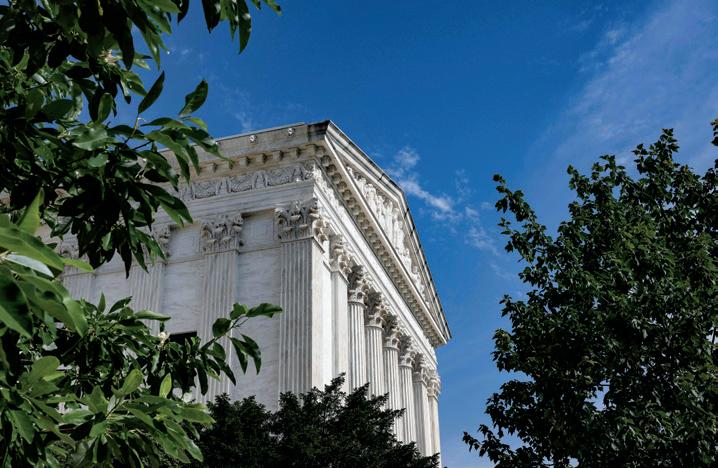
69 | China’s Hegemony
Growing China–Middle East economic ties cannot be ignored.
70 | Alan Dershowitz
How the “get Trump” mentality is undermining the justice system.
76 | Choose Your Pace
Knowing when to saunter and when to hurry are essential life skills.
78 | Sportsman’s Delight
This coastal home offers views of the ocean and the golf course.
80 | The Land of Windmills
Explore the eclectic delights that make the Netherlands so unique.
83 | A Clever Combination
The addition of gin to tonic water creates remarkable results.
84 | Reconsidering EVs
Electric vehicles might not be the best way to save the planet.
87 | RV Enhancements
While RVs are mostly selfcontained, these items make them better.
91 | Being Well-Spoken
A few suggestions on how to develop eloquent speaking skills.
 MEMBERS OF A FAMILY GATHERED outside their shanty in New Delhi on June 28.
PHOTO BY MONEY SHARMA/AFP VIA GETTY IMAGES
MEMBERS OF A FAMILY GATHERED outside their shanty in New Delhi on June 28.
PHOTO BY MONEY SHARMA/AFP VIA GETTY IMAGES



Weeks of LGBT events are crowding out military observance days. 40

El Niño
Analysts say the current weather pattern suggests CO2 emissions are not the culprit. 52
Amid technological advancements, scientists are concerned about the potential health effects of 5G. 60
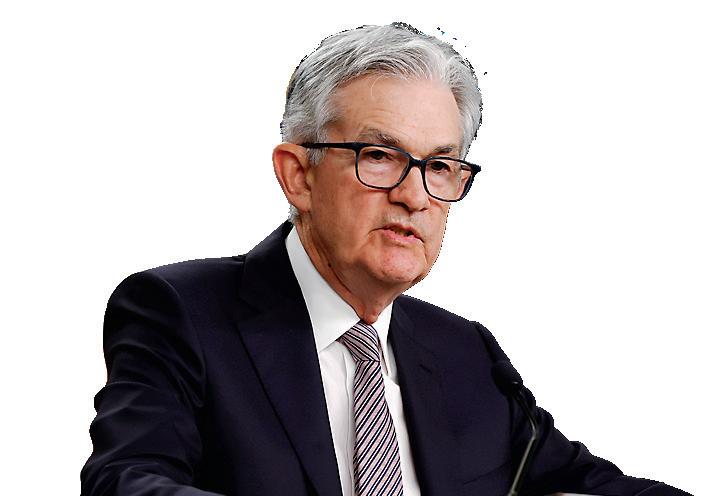
20 YEARS
In the first locally acquired spread of the disease in 20 years, five cases of malaria have been identified in the United States.
$5 MILLION
Former President Donald Trump has filed a counterclaim against author
E. Jean Carroll, accusing her of defamation for accusing him of sexual assault.
$29 MILLION
Oklahoma misspent $29 million in federal pandemic relief funds that may now have to be repaid by taxpayers, according to Oklahoma Auditor and Inspector Cindy Byrd.
50%

Mexican President Andrés Manuel López Obrador has announced that his country will begin imposing a 50 percent tariff on imports of genetically modified white corn.
$9 MILLION A California man was sentenced to almost seven years in prison for defrauding investors of almost $9 million in a “green energy” Ponzi scheme, according to the Department of Justice.

“We believe there’s more restriction coming.”Nikki Haley, former U.N. ambassador, in a speech that pointed to a series of the Chinese regime’s aggressions against the United States
drivers in new y ork c ity will soon be charged a toll to enter the area of Manhattan south of 60th Street, marking a win for environmental activists who say the move will help reduce congestion and improve air quality, but raising concerns over the effects on business owners, including taxi drivers.
The Federal Highway Administration has given the green light to the state’s congestion pricing program following a 30-day public availability period to assess the environmental impact of the plan, Gov. Kathy Hochul, a Democrat, said in a statement.

The program is expected to generate financial support—up to $1 billion yearly—which will go toward upgrading the city’s public transportation system, including subway, bus, and commuter rail systems operated by the Metropolitan Transportation Authority, Hochul said.
The fee will be in addition to tolls that motorists headed into Manhattan already pay to use the bridges and tunnels.
the u.s. supreme c ourt has ruled 6–3 against North Carolina Republicans who argued that state legislatures have sweeping authority to make the rules for federal elections in the states without interference from the courts.
At issue is the once-obscure independent state legislature doctrine, under which Republicans argue that the Constitution has always directly authorized state legislatures alone to make rules for the conduct of federal elections in their respective states.
Democrats called this doctrine a fringe conservative legal theory that could endanger voting rights, enable extreme partisan gerrymandering in the redistricting process, and cause upheaval in election administration.
The court rejected the doctrine, finding that the elections clause doesn’t vest exclusive, independent authority in state legislatures to set the rules regarding federal elections.
john b. goodenough , whose contributions led to the development of lithium-ion batteries, which made many of today’s portable electronic devices possible, has died.
Goodenough died on June 25 at the age of 100, according to a statement from the University of Texas–Austin, where he served as a faculty member for 37 years. No cause of death was given.
In 2019, at the age of 97, he became the oldest person to win the prestigious Nobel Prize in chemistry, sharing the award with British-born American scientist M. Stanley Whittingham and Japan’s Akira Yoshino for the development of the lithium-ion battery.

president joe biden denied being in the room with his son, Hunter Biden, when a text message was sent demanding payment from a Chinese Communist Party (CCP) official and businessman.
“How involved were you in your son’s Chinese shake-down text message? Were you sitting there? Were you involved?” a reporter asked Biden on June 28.
“No, I wasn’t,” Biden said.
youth charity youngminds has called on the British government to act as more children and young people than ever turn to mental health services.
New analysis has shown that the number of under-18s referred to Child and Adolescent Mental Health Services (CAMHS) has risen by 76 percent since 2019.
The charity said in a report that more than 1.4 million young people turned to CAMHS in 2022, according to figures from NHS Digital. That compared to 812,070 in 2019.
ukrainian president Volodymyr Zelenskyy has indicated he could put off his country’s election cycle and stay in power as long as the war with Russia continues.

Zelenskyy told the BBC in an interview on June 22 that he couldn’t guarantee a presidential election would take place in 2024, when his five-year term ends. He said Ukrainian law prohibits elections when the country is under martial law, as has been the case since Russian forces began their full-scale invasion on Feb. 24, 2022.
a study has found that individuals who identify as transgender in Denmark are at significantly higher risk of suicide compared to the northern European country’s general population.

Researchers at the Danish Research Institute for Suicide Prevention in Copenhagen examined the health and legal records of 6.6 million Danishborn people over the span of 42 years for their study, which was published in the Journal of the American Medical Association.
Compared to the rest of the people in the study, the transgender participants are 7.7 times more likely to attempt suicide and 3.5 times more likely to die of suicide. In addition, the nonsuicide death rate is 1.9 times higher than that of their nontransgender counterparts.
officials in the Canadian Prime Minister’s Office (PMO) experienced a more than 43 percent increase in contact with lobbyists last year compared to the previous fiscal year, contributing to an all-time lobbying high last year in Ottawa.
Lobbying Commissioner Nancy Bélanger, in her 2022–2023 annual report, writes that “a new all-time record for the total number of communication reports filed in the Registry of lobbyists was set.”
The commissioner said Prime Minister Justin Trudeau himself was lobbied 56 times in 2022–2023, only three more times than the previous year. However, lobbying of senators, ministers, and MPs saw a large jump. Her office counted just over 3,375 organizations and corporations named in lobbying registrations and around 8,465 individual lobbyists registered at least once throughout 2022–2023, representing a slight increase over the previous year.
















Bins of mail-in ballots for the 2020 presidential election await distribution to workers in Pomona, Calif., on Oct. 28, 2020.


Some Republicans have misgivings, while others say, ‘It’s here. We have to compete to win elections.’
BY PATRICIA TOLSONSome states have decreased the number of ballot drop boxes allowed per county, while other states have passed laws that increased the number of drop box locations.

s the 2024 election cycle draws near, it appears that Republicans are recognizing ballot harvesting as an integral part of any successful election strategy. However, opinions on the decision to give in and use ballot harvesting are mixed.
While campaigns are already well underway, the much anticipated 2024 presidential election cycle won’t officially begin until the Iowa caucuses on Jan. 22, 2024. But while Super Tuesday is only tentatively scheduled to take place on March 5 of next year, debates on the pros and cons of ballot harvesting and mail-in ballots have already begun.
Republicans have spent years decrying the practice of mail-in ballots and ballot harvesting, but they are now realizing that, in order to win, they have to play.
Ballot harvesting is a process by which third-parties can collect completed mail-in ballots from voters and deliver them in bulk to a drop box or local elections office.
Although every state allows absentee voting, the rules and guidelines vary greatly between states.
According to the National Conference of State Legislatures, 31 states allow voters to authorize someone else to return their ballot on their behalf. Of those, nine limit the number of ballots an authorized person can return, and four limit the amount of time those ballots can remain in the authorized person’s custody before being returned.
Alabama has a law on the books that prohibits anyone except the voter from
returning his or her ballot, and in Mississippi, several civil rights organizations are suing over a recent state law that would ban ballot harvesting.
Data compiled by USA Facts in 2021 show that three states—Florida, Georgia, and Iowa—decreased the number of ballot drop boxes allowed per county and established regulations requiring drop boxes to be constantly monitored by county election officials. Conversely, Illinois, Kentucky, and Virginia passed laws that increased the number of drop box locations.
On Jan. 4, 2021, Rep. John Sarbanes (DMd.) introduced H.R. 1. The measure, labeled by Democrats as the “For the People Act,” would have prohibited states from banning ballot harvesting. While it did pass the then-Democrat-controlled House, a Republican filibuster killed the measure. Sarbanes made a similar effort in 2019. Then-Senate Majority Leader Mitch McConnell blocked the measure from reaching the Senate floor.
Twelve states limit the number of ballots a third party may return on behalf of other voters.
In 2022, Dinesh D’Souza released a documentary called “2000 Mules,” alleging that 2,000 individuals were hired by unknown nonprofits to collect ballots illegally and deliver them to drop boxes in key swing states ahead of the 2020 presidential election.
To understand the power of ballot harvesting and mail-in ballots in an election, one must look at the numbers.
A November 2020 study released by Pew Research showed that 54 percent of voters cast their ballots in person during the November 2020 presidential election, compared with 46 percent who voted by mail-in or absentee ballot. Only 27 percent said they voted in person on Election Day, and an equal amount said they voted by way of in-person early voting.
While 37 percent of former President Donald Trump’s voters cast their ballots in person on Election Day, only 17 percent of Biden voters did the same.
Where 30 percent of Trump sup -
porters voted early, only 24 percent of Biden’s voters cast ballots in person before Election Day.
Most noteworthy, while 32 percent of Trump supporters voted by way of mail-in or absentee ballot, more than half of Biden’s voters, 58 percent, cast their ballots through the mail-in method.

Polling data released by the U.S. Census Bureau in April 2021 showed that 69 percent of voters in the 2020 presidential election voted by mail or early voting, making it the “highest rate of nontraditional voting for a presidential election” recorded.
In 2016, for comparison, 40 percent of Americans used mail-in ballots during the presidential election.
After years of criticizing ballot harvesting and a push toward mail-in ballots, some Republicans are beginning to reconsider their party’s unbending resistance to both practices.
On Nov. 29, 2022, on Truth Social, Trump wrote in all capital letters, “You can never have fair & free elections with mail-in ballots—never, never, never. Won’t and can’t happen!!!”
Three months later, in a February fundraising email, Trump asked supporters to chip in for his “ballot harvesting fund,” writing, “Either we ballot harvest where we can, or you can say goodbye to America!”
On May 6, 2021, Republican Gov. Ron DeSantis of Florida signed SB 90 into law, effectively banning ballot harvesting in the state. At a Nov. 3, 2021, press conference in West Palm Beach, Florida, DeSantis said he wanted to make ballot harvesting a third-degree felony.
Former President Donald Trump, GOP presidential candidate
However, as a contender for the Republican nomination for the 2024 election cycle, DeSantis assured a voter at a campaign stop in Iowa on June 1, “We’re going to do ballot harvesting.”

“I’m doing it. Yes,” he said. “I’m not going to fight with one hand tied behind my back.”
During a September 2020 interview with C-SPAN, Republican National Committee Chair Ronna McDaniel criticized hasty expansions of mail-in voting and ballot harvesting under the guise of public safety during the COVID-19 pandemic without first putting a system in place to ensure the integrity of the process.
She said Trump was right in saying “Democrats have inserted havoc and chaos” into the election cycle.
In a Fox News interview two years later, McDaniel said Republican voters need to start voting early.
“I have said this over and over again,” she said. “There were many in 2020 saying, ‘Don’t vote by mail, don’t vote early.’ And we have to stop that.”
“You don’t want to be at a political disadvantage because the other party is heavily recruiting people to go out and collect ballots and you don’t do the same thing.”
Hans von Spakovsky, manager, Election Law Reform Initiative, The Heritage Foundation
“Either we ballot harvest where we can, or you can say goodbye to America!”CLOCKWISE FROM L: IAN DEWAR PHOTOGRAPHY/SHUTTERSTOCK, ALEX WONG/ GETTY IMAGES, COURTESY OF HANS VON SPAKOVSKY
In June, McDaniel started the GOP’s new “Bank Your Vote” initiative. In a video promoting the project, McDaniel stressed that the GOP is going to join in the ballot harvesting practice only as a means to “protect the vote,” and because it’s necessary for Republicans to adopt similar strategies since Democrats have already established a successful advantage.

MyPillow CEO Mike Lindell, who challenged McDaniel for her committee chairmanship in January, said the RNC has made a huge mistake.
“How do you just change your tune and hope states will go for it and make ballot harvesting legal?” Lindell told The Epoch Times. “This is not the right approach. It’s a desperation move.”
Lindell also noted how Democrats put several voting practices into play illegally in multiple states during the COVID-19 pandemic through secretaries of state and governors, which he believes gave Democrats an illegal advantage.
“No matter what is going on in our country, you have to stick by the Constitution, and legislators make the law,” Lindell said. “So all of these things they put in illegally in 2020, they are now starting to try to make as the status quo, and that can’t happen or we’re going to lose our country for sure.”
‘It’s a Bad Idea’
Michael Thompson, chairman of the Lee County Republican Executive Committee and Election Integrity Committee member of the Republican Party of Florida, said that the words “ballot harvesting” “strike fear into many Republicans.”
“They should just stay in their lane,” Thompson told The Epoch Times. “The one thing Republicans never seem to learn is that Democrats are constantly doing things to set them up.”
Thompson said he believes Republicans are embracing ballot harvesting and mail-in ballots only “because Democrats have been so successful at it.”
“But my concern is that Democrats are going to be in there monitoring Republicans to make sure they’re doing
it right and if they aren’t doing it right they’re going to accuse Republicans of trying to rig the elections,” he said. “No matter what you think of Democrats, they’ve always out-maneuvered Republicans.
“It’s too little, too late. It’s a bad idea to jump into ballot harvesting to try to win an election when your opponent wrote the book on it.”
Corey Gibson said he’s excited by the idea of leveling the ballot harvest playing field. In his position as national executive director of development for Rethink! GOP, he will be playing an integral role in creating what he said will be a winning strategy.
“Ballot harvesting is something that Democrats have been doing forever and the Republicans simply haven’t been competing with them,” Gibson told The Epoch Times, explaining that the project began when “some Gen Z folks got together” and began discussing how exhausting it was watching the GOP continue to lose the ballot harvest game.
As founder of the America First PACT, Gibson has already assembled a skilled “army of social media influencers” he can “loop in to help create the initiative.”
“We’re the first national ballot harvesting project,” Gibson said.
“We’ve been able to unite Gen Z leadership with ‘established,’ rather than ‘establishment,’ leaders and champions for voter integrity. Now, like with everything else in life, it’s a matter of fundraising.”
While some are concerned about the optics of Republicans’ embracing a practice they were condemning not long ago, Gibson said he has come in contact with many who are relieved that the party is finally competing with Democrats in this way.
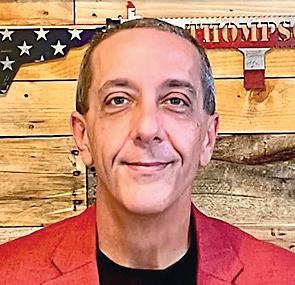
“By and large, everybody hates ballot harvesting,” he said. “But they also hate the fact that it’s legal and we’re not doing it and we’re continuing to lose. It’s here. We have to compete to win elections.”
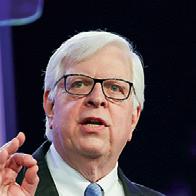
“We’re going to do ballot harvesting. ... I’m not going to fight with one hand tied behind my back.”
Florida Gov. Ron DeSantis, GOP presidential candidate
“Republicans will have to play this game by the new rules and also organize and ‘harvest’ ballots.”
Dennis Prager, founder, PragerU
“It’s a bad idea to jump into ballot harvesting to try to win an election when your opponent wrote the book on it.”
Michael Thompson, chairman, Lee County Republican Executive Committee
In an October 2019 study for The Heritage Foundation, Hans von Spakovsky described ballot harvesting as “a dangerous and foolish public policy that threatens the integrity of elections,” insisting “it should not be implemented by state legislatures—and should be prohibited in the states that currently allow it.”
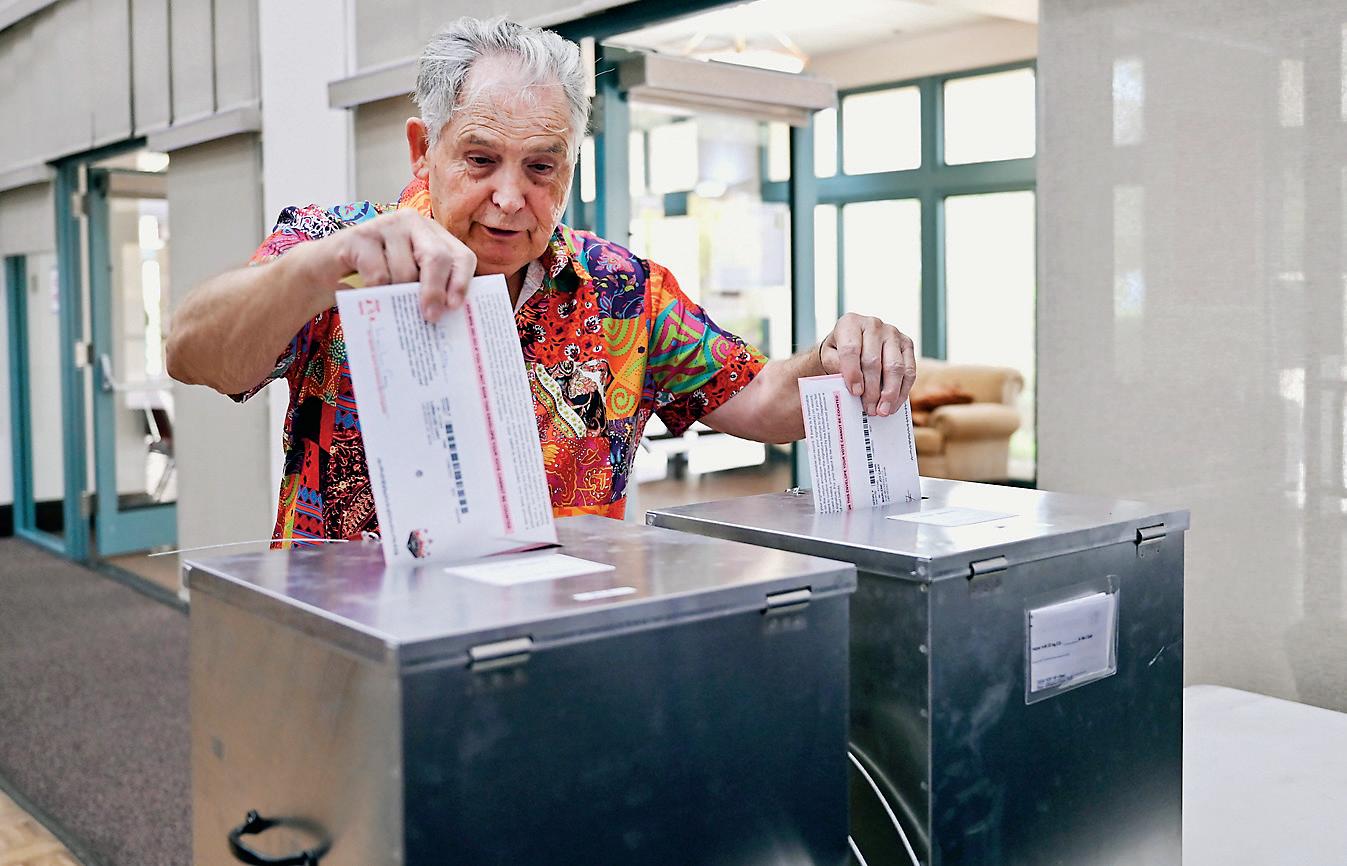
As manager of the organization’s Election Law Reform Initiative, von Spakovsky is an authority on voter fraud and the enforcement of federal voting rights laws.
“I actually call it ‘vote trafficking,’ because that’s what it is,” von Spakovsky told The Epoch Times.
Still, he doesn’t “see any conflict” between prior and current GOP sentiments on the topic.
“In states where it’s legal you need to comply and play by the rules,” von Spakovsky explained. “But you don’t want to be at a political disadvantage because the other party is heavily recruiting people to go out and collect ballots and you don’t do the same thing. You have to meet their efforts.”
For those who express concern about Republicans’ decision to embrace ballot harvesting and the prospect that the GOP won’t be able to compete with Democrats on this contentious yet necessary front, von Spakovsky said: “That’s no reason not to take legal advantage of the rules that govern an election process.
“You have to meet their efforts and do the same thing. But that doesn’t mean that you stop trying to convince legislators in states that allow this to change the law.”
Dennis Prager, a nationally syndicated talk show host, author, and founder of
PragerU, issued a statement to The Epoch Times about the issue.
“Democrats have pushed through election rule changes that transformed Election Day into Election Month, pushed through rule changes that, in some states, made ballot harvesting—a practice that had been illegal precisely because it so opens the door to fraud— legal, and then added a further rule change requiring mail-in ballots be sent to every registered voter,” he said.
Prager also suggested that Democrats didn’t change the rules out of concern for voters who might not have time to go to their polling location to cast their vote.
“They did these things because they knew if elections became a game of gathering ballots rather than winning votes, Democrats, through their activists operating primarily in Democrat-leaning precincts, would have a massive advantage,” Prager said.
“Anyone can collect and turn in the ballots of others with no verified chain of custody or proof that the voter, not an activist, filled out the ballot.”
For now, Prager conceded that “Republicans will have to play this game by the new rules and also organize and ‘harvest’ ballots.”
Prager suggested that if the GOP truly wants to restore election integrity, Republican state legislators will have to propose and pass laws that bring elections back to the days of paper ballots and hand-counts at the precinct level— on Election Day.
“The only exceptions should be made for people who are bedridden or out of town when the election takes place,” Prager said. “Anything short of that means the United States no longer has elections we can have faith in.”
20 percent of 16- to 24-year-olds seeking work in urban areas can’t find a job
 BY TERRI WU
BY TERRI WU
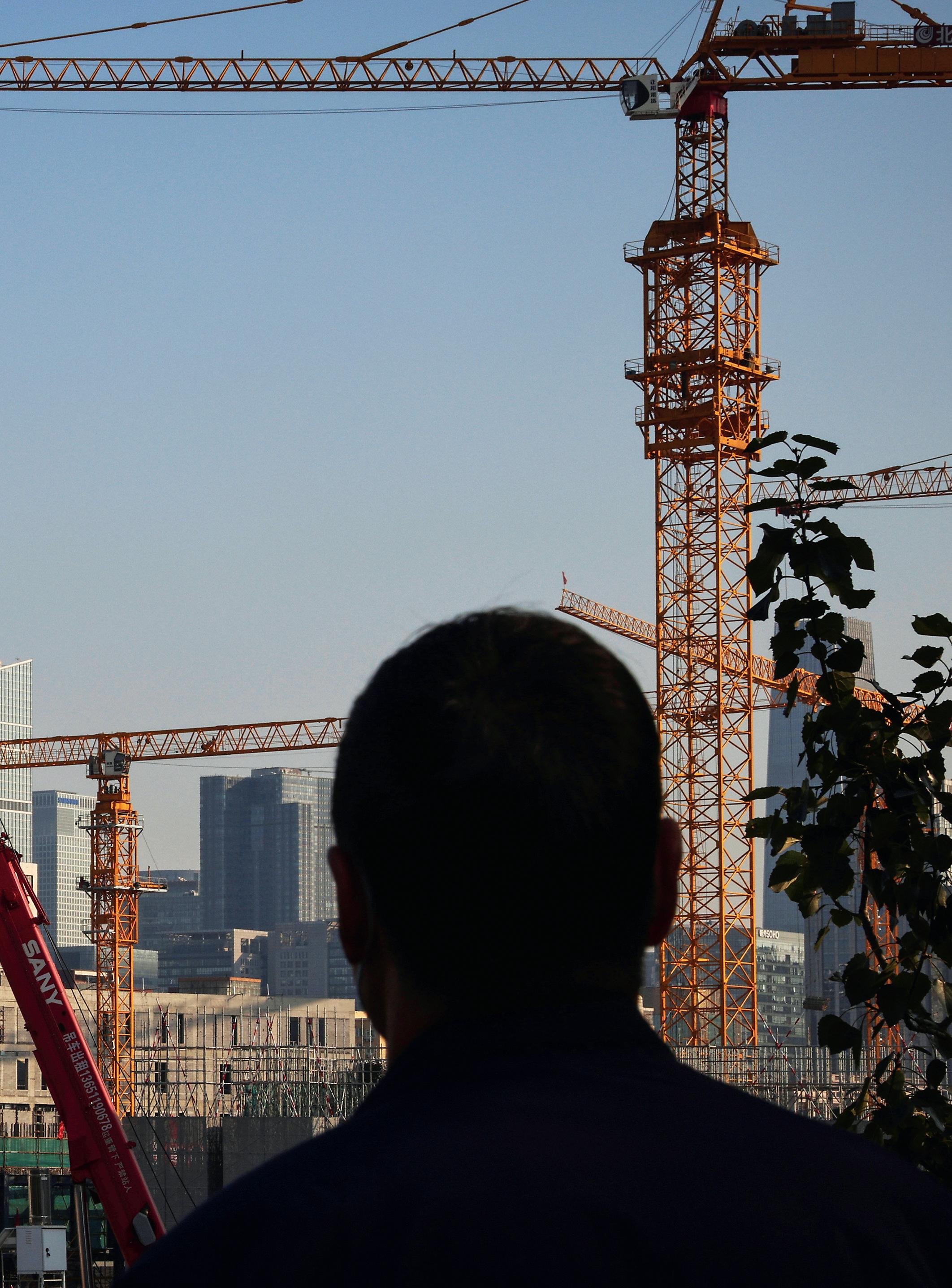 Data from May show weakening manufacturing and services sectors amid sluggish demand in China.
PHOTO BY THOMAS PETER/FILE PHOTO/REUTERS
Data from May show weakening manufacturing and services sectors amid sluggish demand in China.
PHOTO BY THOMAS PETER/FILE PHOTO/REUTERS
With graduation looming amid a fiercely competitive job market, many college students in China are scrambling to find a position.
At a free live-stream webinar hosted in mid-June by a training company for job seekers, many of the 800 participants—primarily unemployed 2023 and 2022 graduates—eagerly posted comments to claim free templates for resumes.
“Many of my trainees told me that they live with their parents, who had been scolding them for not trying hard enough to land a job,” the event host told the attendees.
“I can tell them [parents]: Finding a job this year is challenging. It’s the market; it’s not you. Forwarding my webinar to your parents will help you alleviate the anxiety.”
Based on the emojis and remarks in the comments section, anxiety was common among attendees of the webinar, held on a popular Chinese social media app. Statistics point to a similar picture.
China’s official youth unemployment rates were 20.4 percent in April and 20.8 percent in May—about four times the overall unemployment rate of 5.2 percent. Those rates are also about double the level of youth unemployment just before pandemic measures were implemented.
While a rate of about 20 percent means that roughly 1 in 5 of those aged 16 to 24 who are seeking work in urban areas can’t find a job, the rate doesn’t include those who are not participating in the labor market—currently, about two-thirds of China’s 100 million young urban population, according to China’s National Bureau of Statistics.
This growing crisis prompted Chinese authorities in April to announce a series of policy incentives to take effect by the end of 2023. They include providing subsidies to expand hiring by state-owned enterprises (SOE), encouraging financial institutions to increase hiring and the issuing of business loans, offering more vocational training, and creating at least 1 million internship positions.
Still, higher youth unemployment is expected to continue for the next few months, according to a Goldman Sachs forecast.
On June 18, the investment bank also cut China’s 2023 gross domestic product (GDP) growth forecast to 5.4 percent from 6 percent, citing macroeconomic issues—property sector, debt issues, and U.S.–China tensions—that are unlikely to be addressed by China’s stimulus measures.
China’s central bank started cutting interest rates in mid-June following a deposit rate decrease by major banks. Goldman’s downgrade followed similar assessments by a host of major banks, including UBS, Bank of America, and JPMorgan, that have lowered their GDP growth outlook for the country.
Today’s high youth unemployment rate is a symptom of years of ambitious growth on paper supported by a heavily indebted economy, according to Christopher Balding, an expert on the Chinese economy at the Henry Jackson Society, a UK-based think tank.
The problem preceded the pandemic and has been 15 years in the making, Balding told The Epoch Times.
“I don’t think the pandemic’s contribution to this is zero. However, I don’t think it’s a majority. The pandemic probably made it a little bit worse, but these problems would exist with or without the pandemic.”
In response to the global financial crisis, Chinese authorities released a fiscal stimulus package of 4 trillion yuan ($586 billion at the time), equivalent to 12.5 percent of 2008 GDP, according to the World Bank. By comparison, the U.S. stimulus package was $939 billion from 2008 to 2010, equal to about 6 percent of its 2008 GDP.
China’s central bank also loosened money policy significantly by cutting the interest rate by more than 2 percent to 5.31 percent in December 2008.
Balding said that China went on a path of pushing for ar-

tificially high growth rates after 2008, growing infrastructure regardless of demand. At the same time, Chinese authorities, companies, and families have piled on debt.
China’s core debt—credit to the nonfinancial sector— is nearly three times its GDP, compared to the U.S. ratio at 2.5 and emerging market economics at an average of 2.2, according to the Bank for International Settlements, known as the central bank for central banks.
On June 17, China’s State Administration of Market Regulation issued a new regulation to “restore credit for business entities.”
“It’s basically advising banks to help firms repair their credit, ignore firms’ missed payments, and so on,” Balding said. “The fact that they’re putting out that type of advice to financial institutions, as a regulator,
One professor said only two of the 350 graduates in her department this year had found jobs.
speaks to the depth of the problem related to debt.”
“And if you’re a heavily indebted company, taking on more debt or taking on additional labor is a very big ask,” he added, referring to the Chinese Communist Party’s (CCP’s) policies to stimulate hiring.
China’s household debt-to-GDP ratio rose steadily to 63.3 percent in March 2023 from 17.9 percent in December 2008, compared with a ratio of 65.7 percent in the United States. More tellingly, Chinese household debt as a percentage of disposable income reached 130 percent by the end of 2020, with the United States at 100 percent the same year.

In Balding’s view, China’s supply-driven growth has hit a wall and can theoretically be solved by stimulating demand. However, he considers driving demand unrealistic because the CCP can’t do what’s required—that is, to empower consumers and give individuals the freedom of choice.
“I think there are a lot of possibilities or a lot of hope for China, but it would absolutely require dismantling policies in China that are not going to be dismantled,” he said, citing restrictions on interprovincial migration and the latest rural management restrictions on the use of arable land.
Antonio Graceffo, a China economic analyst and a contributor to The Epoch Times, said that the regime has routinely responded to economic trouble by investing in infrastructure. But that approach might not work this time.
“All the sensible infrastructure has already been built in China; we’re at a point where all the major ports, the cities, everything is connected. So when they build more infrastructure now, it’s really just making work,” he told The Epoch Times.
“You’re just creating jobs, paying for it out of the public revenues, and it’s not necessarily yielding
any sort of significant GDP advantage.”
The country no longer has the types of infrastructure projects such as the Beijing–Shanghai high-speed rail to fuel GDP growth again, Graceffo said.
“I think China has seen their biggest growth that they’re ever going to see.”
Beyond the Official Number
China’s official youth unemployment rate may not capture the full story.
Job seekers between the ages of 16 and 24 include middle school and high school graduates from rural areas seeking urban employment and city students with undergraduate degrees.
A professor at a private college in Guangzhou, a mega city in China’s affluent coastal south, believes that the actual rate is much higher than the official 20 percent, and could be as high as 80 percent. She spoke to The Epoch Times on the condition that her name, college,

and professional field remain anonymous to avoid her being tracked by the CCP.
She said that only two of the 350 graduates in her department this year had found jobs. With graduation on June 28, students must provide employment information to get the diploma.
The official proof for employment, the “three-way agreement” is signed by the student, an employer, and the school to satisfy the requirements of the local government’s human resources agency, although schools also accept any form of labor contract.
“Students are not issued a diploma if they do not provide employment paperwork. The rule is understood but not written,” the professor told The Epoch Times, adding that if a student should challenge the rule with the school or the city’s education department, the school would then withhold the diploma, citing insufficient internship credit.
As a result, students fake employment in various
ways, according to the professor. He cited the example of a friend whose son hasn’t worked for three years after graduation but is “employed” on paper.
In China, public colleges are considered to be of a higher academic caliber than private ones and have lower tuition. As the common campus recruiting sources for SOEs, they have creative ways to boost their graduates’ employment rate.
The professor, who previously taught at a public college, said that public institutions engage in a practice known as “hitchhikes” to skirt the rules. For example, if an SOE had a quota of two new hires for a college, the college would give the SOE a list of 12 additional student names in order to ink fraudulent three-way agreements. In this way, the university’s “education quality” report looks better, and its unemployment rate is also lower on paper.
Since three-way agreements aren’t real labor contracts, signing such “hitchhiking” paperwork doesn’t result in actual employment.
Students aren’t issued diplomas if they don’t provide employment paperwork. As a result, students forge employment in various ways, a professor says.
(Left) The CCP’s youth unemployment problem is “self-inflicted,” an expert says. Although Chinese leader Xi Jinping talks about a knowledge economy and a service economy, he puts emphasis on chip manufacturing and electric vehicles and batteries.

The global youth unemployment rate was about 14 percent in 2022, according to the United Nations’ International Labor Organization, and young people ages 15 to 24 are three times as likely as adults to be unemployed.

In light of global statistics, the fact that China’s more than 20 percent rate is about four times the country’s overall unemployment rate is “really a serious problem,” Jean Yeung, a professor of sociology at the National University of Singapore, told The Epoch Times.
Yeung also estimates that the youth unemployment rate is higher than 20 percent taking into consideration the underemployed—those who have to take part-time positions because they can’t find full-time employment or who are overqualified workers.
Last year, the professor began to hear about employment difficulties from her students, a problem that has become more prominent this year. In Guangzhou, most of the students find jobs in foreign or private Chinese enterprises; very few go to SOEs, where students’ family connections are essential for job placement. However, job availability in foreign and private companies has shrunk significantly due to foreign investment leaving China and the regime’s clampdown on the private sector.
“Overall, there’s definitely an increase in anxiety, disappointment, and doubt [among China’s youths] about what the future has in store.”
Yeung said that the difficulty of getting that first job, seen as a marker of a youth’s transition to adulthood, will likely affect their following transitions to marriage and parenthood.
A Stanford University study in 2019 found that college students who graduate during a recession earn less for 10 years to 15 years as compared with those who graduate during good times. The unlucky college graduates are also less likely to be married and be parents.
A high youth unemployment rate might lead to “disenchantment” with the communist regime in China and its leader, Xi Jinping, Graceffo said.
“In a way, the young people are really the most important people for a political system like the CCP to function. The CCP controls education because they want the children to be indoctrinated with CCP policy and to love the Party.
“These children don’t have siblings; they don’t have anybody else to rely on except for their parents and the CCP.”
Some youths in China have thus turned to “lying flat,” he said, referring to a countercultural movement in which young people have abandoned their pursuit of material wealth as a reaction to narrowing opportunities and harsh work conditions.
Although the youth unemployment rate tends to be higher than that of the overall population in bad times because young people lack work experience, Yeung summarized China’s situation as “rising supply meets weakening demand.”
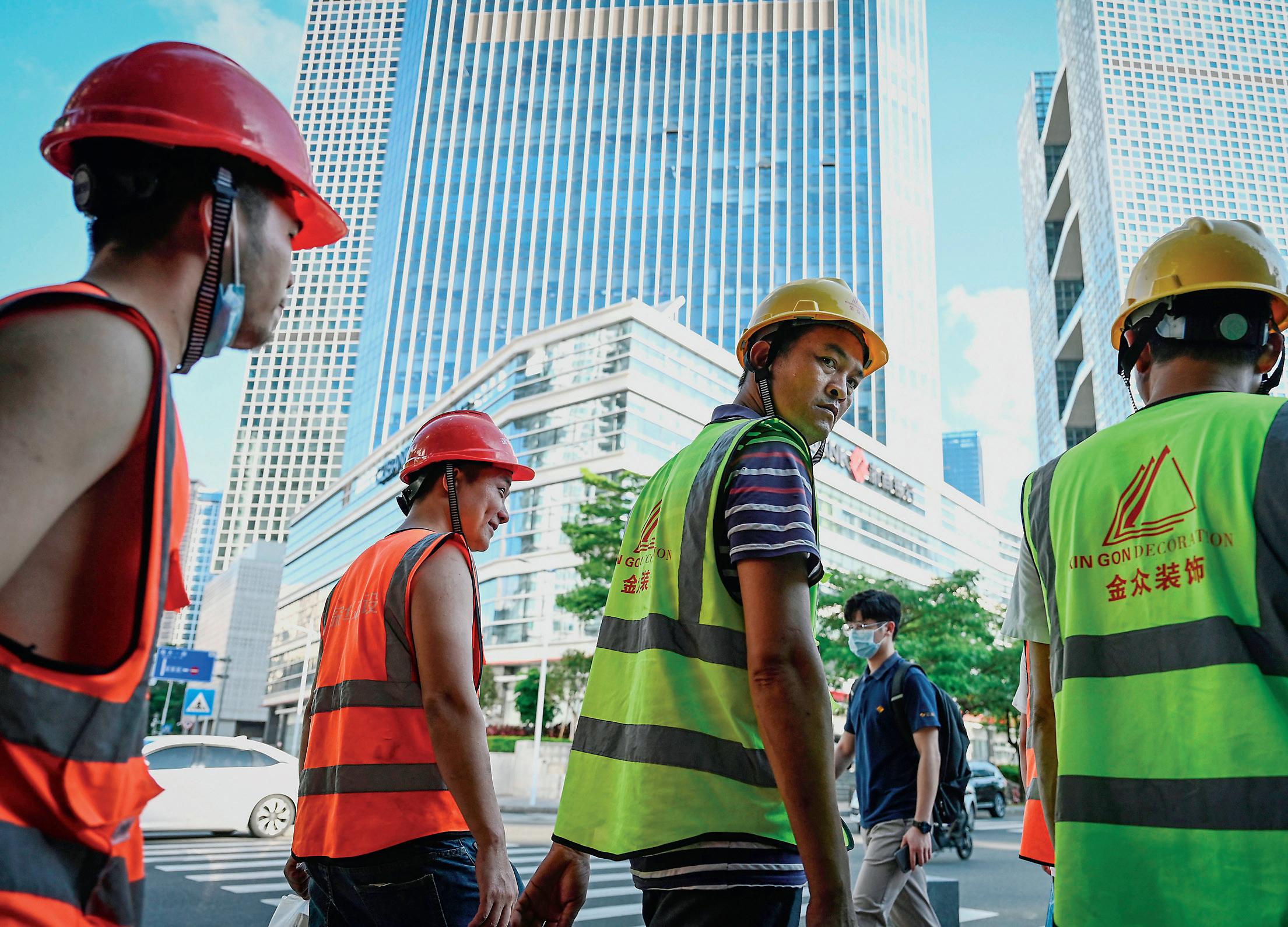
Since 1999, China has embarked on a college expansion policy to facilitate a hoped-for transition from a labor-intensive economy to one that’s based on technology and knowledge. This has led to an exponential increase in college graduates.
About 1 million college students graduated in 2000. That figure rose to 10 million in 2022, marking an 18 percent growth from 2021.
The increased supply of graduates has been exacerbated by the weakened worker demand, a problem that’s driven partly by the CCP’s pandemic lockdowns and by non-pandemic-related policies.
Data from May shows weakening manufacturing and services sectors amid sluggish demand.
Meanwhile, the CCP’s clampdown on the private sector has resulted in mass layoffs in technology, property, and private-tutoring industries, areas that typically hire many new graduates.
Struggling students have turned to graduate studies instead. For the first time in Beijing, graduates of post-
graduate programs are projected to surpass graduates with bachelor’s degrees this year.
According to the Beijing Municipal Education Commission, in 2022, the number of graduates with an advanced degree was about 110,000, which was 40,000 fewer than students who graduated with a bachelor’s or associate’s degree. This year, graduates with an advanced degree will reach 160,000, which is 1,000 more than those graduating with an undergraduate degree.
The CCP’s attempts to tackle youth unemployment, which include allowing more students to enroll in graduate programs as well as a one-time hiring expansion by the SOEs, are only temporary solutions that kick the can down the road, according to Yeung.
In her view, the key is to drive up employee demand, which will require more recruitment from both the private sector and SOEs.
“China needs to try very hard to get people’s confidence and spirit up again,” Yeung said, adding that China needs to get the markets working to meet people’s post-pandemic expectations.
Because those ages 16 to 24 contribute a significant share of overall consumption—20 percent by Goldman Sachs’ estimate—a continued high youth unemployment rate would further drag down the country’s postCOVID economic recovery, Yeung added.
To Milton Ezrati, chief economist for the New Yorkbased communications firm Vested, the high youth unemployment rate laid bare Xi’s priorities.
Although Xi has frequently declared his desire for China to move from a low- and mid-skilled economy to a service-oriented one, his actual priority is in the manufacturing and mining sectors, as he sees these industries as vehicles to achieve global dominance, said Ezrati, a contributor to The Epoch Times. An official report estimated that nearly 30 million manufacturing jobs will be unfilled by 2025 because of the skills mismatch of college graduates.
The CCP’s youth unemployment problem is “self-inflicted,” Ezrati said. “Had Xi been true to his ambitions to have a service, knowledge economy ... this problem would probably exist, but not be nearly as severe.
“At the same time as [Xi] talked about a knowledge economy and a service economy, he put great stress on effectively cornering the market in certain crucial industries, such as chip manufacturing and electric vehicles and batteries.”
In Ezrati’s view, the CCP’s way out is to adopt a market-based economy, which the communist regime would never do because authoritative central planning is ingrained as a core ideology. A market-based economy would mean a flourishing private sector, which the CCP has been clamping down on for almost three years.
“I think the greatest threat to the CCP is these independent sources of power that large consumer-oriented firms have.”
China’s official youth unemployment rates in April and May were four times that of the national average.
$52
China’s core debt is nearly three times its gross domestic product, which was $17.7 trillion in 2021, according to the Bank for International Settlements.
1 IN 5
16- to 24-year-olds currently seeking work in urban areas don’t have a job.

63.3%
China’s household debt-to-GDP ratio rose to 63.3 percent in March 2023 from 17.9 percent in December 2008, data show.
130%
The Chinese household debt as a percentage of disposable income reached 130 percent by the end of 2020, an article reports.
80%
The actual unemployment rate for 16- to 24-year-olds in China could be as high as 80 percent, a professor says.

While Section 702 was designed to combat foreign terrorism, the FBI has been accused of using it for purely domestic reasons.
PHOTO BY CHIP SOMODEVILLA/GETTY IMAGESDespite the c onstitution’s Fourth Amendment, which prohibits warrantless government searches, U.S. agencies are proving to be ever more intrusive in their routine surveillance of Americans’ speech and activities.
Often working in collaboration with private companies and banks, agencies such as the FBI have been misusing laws against foreign terrorism to vacuum up and sift through the private data of millions of Americans without a warrant or any evidence of a crime.
As Congress now debates reauthorizing relevant sections of the Foreign Intelligence Surveillance Act (FISA) that are set to expire this year, the libertarian think tank Cato Institute held a fourday conference in early June, which featured calls for major legal reforms by conservative and liberal speakers alike.
“The violations that we’ve seen have not just been epic in scale, but they’ve also been persistent, over and over again,” Jake Laperruque, deputy director at the Center for Democracy and Technology, told attendees.
“To put a human scale on this, what we’re talking about is not just random typos or wrong clicks; we’re looking at things like pulling up batches of thousands of political donors in one go, without any suspicion of wrongdoing. We’ve had reports of journalists, political commentators, a domestic political party; these compliance violations are the most worrisome type of politically focused surveillance.”
In 2001, Congress passed the Patriot Act as a means to combat foreign terrorism after the Sept. 11, 2001, attacks. In 2008, Congress added an amendment to FISA, Section 702, which authorized warrantless surveillance of non-U.S. persons located outside the country. This amendment, which critics say is the source of much of the abuse, is scheduled to “sunset” on Dec. 31.
Congressional debates about whether to renew Section 702 are coming amid numerous reports that the FBI and other federal intelligence agencies have abused the surveillance authority granted to them by this law. Critics say
there’s mounting evidence that federal agencies have been using laws that were intended to target foreign terrorists to conduct extensive, long-term domestic spying campaigns on U.S. citizens.
“To prevent Section 702 from being used as an end run around [Fourth Amendment] protections, Congress did two things: It required the government to minimize the collection, sharing, and retention of Americans’ personal information ... and it required the government to certify to the FISA court on an annual basis that it is not using Section 702 to try to access the communications of particular known Americans,” Elizabeth Goitein, senior director at New York University’s Brennan Center for Justice, told conference attendees.
“What has become abundantly clear over the last 15 years is that these protections are not working. All agencies that receive Section 702 data have procedures in place, approved by the FISA court, that allow them to run electronic searches ... for the purpose of finding and retrieving the phone calls, text messages, and emails of Americans.”
3.3
In addition, the report states: “Over the past six years, the NSA has obtained unprecedented access to the data processed by nine leading U.S. internet companies. This was facilitated by a computer network named PRISM. The companies involved include Google, Facebook, Skype, and Apple.”
Speaking to attendees of the Cato Institute conference, Nathan Wessler, a director at the American Civil Liberties Union, detailed “the rise of data brokers” that assemble enormous databases of photo IDs that they then sell to law enforcement for profit.
“Many companies are selling face recognition algorithms to government and private industry buyers,” Wessler said. “That might be state driver’s license photos, arrest photos, federal passport photos.
“And then there’s another company, Clearview AI, which has been scouring the internet for billions of photos. The last I heard, they had a database of 30 billion photos of people from social media, from employer websites, from local newspapers, and anywhere else on the internet where there’s a photo that might be attached to a name, building giant databases of face prints extracted from those photos, and selling that to police departments and other law enforcement around the country.”
200,000
A report by the Brennan Center for Justice states that “since 2006, the National Security Agency (NSA) has been secretly collecting the phone records of millions of Americans from some of the largest telecommunications providers in the United States, via a series of regularly renewed requests by the Federal Bureau of Investigation (FBI).”
This, Wessler said, “presents a truly unprecedented ability for the government to instantaneously identify anyone in any situation and then take action without usually any kind of court oversight, and often in tremendous secrecy.”
“We have legacy photo data sets of almost all of us,” said Clare Garvie, counsel at the National Association of Criminal Defense Lawyers. “As a practical matter, most of us are in numerous of these, and they’ve been almost instantaneously turned into biometric data sets.”
According to Garvie, the collection of these biometric data sets by law enforcement started in about 2001 and has been expanding ever since.
“That really happened without any notice to the public, any sort of negotiation or discussion about enrollment,” she said. “Its adoption has predated by almost 20 years any sort of public dis-
cussion about regulation, control, etc.”
This data collection comes at a time when the Transportation Security Administration is expanding the use of facial recognition software at airports. It’s also coming at a time when, in the wake of numerous scandals, an increasing number of Americans are losing trust in the FBI and the Department of Justice. According to polls in 2021 and 2022, about half of all Americans have an unfavorable opinion of the FBI.
On May 12, special counsel John Durham released his report regarding the FBI investigation of alleged Russian collusion, which ultimately proved to be a hoax, in Donald Trump’s 2016 presidential campaign. Durham found that throughout an investigation that was “predicated on unvetted hearsay information,” senior leaders at the FBI violated their own rules and applied a double standard in how they treated Trump compared with his Democrat opponent, Hillary Clinton.
“What Durham found is that apparently, no one in the FBI or the National Security Division at DOJ thought it would be a good idea to go to NSA and CIA and ask them, ‘Hey, do you have anything that would corroborate this?’” said Patrick Eddington, a senior fellow at the Cato Institute. “And when you’re talking about an investigation that targeted the
campaign of a presidential candidate, if they were that sloppy there, then how much more sloppy are they being with folks that don’t have the kind of power and influence that Donald Trump does, or that Hillary Clinton does?”
said, “This incident, along with other outlined abuses, must be a wake-up call.”
While Section 702 was designed to combat foreign terrorism, the FBI has been accused of using it for purely domestic reasons, including to track down Americans who participated in the U.S. Capitol breach on Jan. 6, 2021. And this effort is alleged to be part of a pattern of FBI surveillance of American citizens, including most recently charges that the FBI has targeted parents who protest school curricula and Catholics who oppose abortion rights.

On March 22, the House Intelligence Committee established a bipartisan working group to assess under what conditions Section 702 should be extended. Simultaneously, pressure to kill the provision is coming from people on both the left and the right who are concerned about a pattern of civil rights violations by federal agencies.
“Many Americans have rightfully lost faith in the FBI and the FISA process,” Rep. Darin LaHood (R-Ill.) stated at the time. Citing abuses in the Durham report, he
In a March 24, 2022, letter to FBI Director Christopher Wray, Rep. Jim Jordan (R-Ohio) and Rep. Mike Turner (R-Ohio) cited a report by the Office of the Director of National Intelligence (ODNI) that “from December 2020 through November 2021, the FBI conducted 3.3 million U.S. person inquiries against its Section 702 holdings. This was a substantial increase from the number of U.S. person queries the FBI conducted from December 2019 to November 2020, which was approximately 1.3 million.”
Bob Goodlatte, a former U.S. representative and chairman of the House Judiciary Committee, said: “These are long, ongoing programs that do not involve war in the traditional sense of the word. They are done in such a way that Americans’ rights under the Fourth Amendment are
The National Security Agency headquarters in Fort Meade, Md. A report states that “since 2006, the [NSA] has been secretly collecting the phone records of millions of Americans.”
“The violations that we’ve seen have not just been epic in scale, but they’ve also been persistent.”
Jake Laperruque, deputy director, Center for Democracy and Technology
violated constantly, all day, every day.”
Goitein said that the FBI “routinely conducts these queries at the ‘assessment’ stage of its investigations, which is before the Bureau has a reasonable factual basis to suspect criminal activity, let alone probable cause and a warrant.”
“The FBI conducted around 200,000 backdoor searches in 2022 alone, so that’s more than 500 warrantless search of Americans’ communications every day,” she said.
“The NSA and CIA also conduct thousands of backdoor searches every year. When you look at these numbers, it becomes clear that what was supposed to be a solely foreign-focused authority has in fact become a very powerful domestic spying tool.”
The ODNI report also cited an FBI bulk inquiry of 19,000 donors to a congressional campaign. In addition to the FBI’s alleged collaboration with tech and telecom companies to collect data on Americans, there have been allegations of collaboration with banks, as well.
Following an FBI “whistleblower” report that “Bank of America (BoA) provided the FBI—voluntarily and without any legal process—with a list of individuals who had made transactions in the Washington, D.C., metropolitan area with a BoA credit or debit card between January 5 and January 7, 2021,” Jordan and Rep. Thomas Massie (R-Ky.) wrote on June 12 to JPMorgan Chase, Citigroup, Truist Financial Corp., Wells Fargo, and U.S. Bank demanding information regarding whether they had acted in a similar fashion.
“If you go back and you actually look at the historical record, an awful lot of groups, either ethnically, religiously, politically, have wound up in the government’s crosshairs, and it’s a completely consistent pattern,” Eddington said. “That’s what, to me, speaks to the larger problem that we’re dealing with here.
“What was fascinating and terrifying was to go through records from the World War I era and to see just exactly how victimized German Americans were, and I’m talking about lynchings, I’m talking about murders. The focus on Arab and Muslim Americans easily goes back to the Palestinian rights era.”
Laperruque said that “some of the worst surveillance abuses in recent history have all been done under this idea of defensive surveillance” against foreign enemies. He cited cases such as Martin Luther King being monitored because the civil rights and anti-war movements allegedly represented security threats during the Vietnam War.
“It’s proven to be some of the most vulnerable types of surveillance to abuse,” he said.

Assistant Secretary of State Brett Holmgren said on May 30 that while he found the abuses of Section 702 “disturbing,” the program should continue.
Holmgren, who oversees the State Department’s Bureau of Intelligence and Research (INR), said the national security and diplomatic uses of Section 702 were essential and downplayed the abuses.
“Today, INR and the State Department that we serve is at risk of losing access to one of the most important streams of intelligence on which we rely ... Section 702 of the Foreign Intelligence Surveillance Act,” Holmgren said.
Goodlatte said that Section 702 can be reformed in a bipartisan way to prevent many of the current violations from recurring.
“This is a tremendous opportunity because of the heightened awareness on both sides of the aisle in Congress of these
abuses,” Goodlatte said. “Congress can act in a very bipartisan way, and I think is disposed to act in a very bipartisan way.”
Goitein said: “Section 702, on one level, is an incredibly technical and complicated bill, and I think the government uses that to its advantage. But if we get lost in a conversation about technical details, we’re missing the big picture.
“What Section 702 is being used for right now is not complicated at all; it’s being used for warrantless access to Americans’ communications. That is the principle we need to hold on to, that surveillance in this country, surveillance of Americans, should be pursuant to a warrant, and there should be robust mechanisms in place to ensure accountability and oversight.
“I think as long as we keep our eye on those big principles and don’t get lost in the legal weeds, we’re going to end up with a pretty good outcome.”
Laperruque said: “We cannot have a regime where the people doing the watching are also watching themselves for abuse and misconduct.
“I do think that 702 can be reformed, but we need to remove it from this realm of self-policing ... and actually have items like a warrant rule, where if the FBI or NSA or CIA wants to conduct a query to pull up Americans’ communications, it has to get a court order first.”
 By Samantha Flom & Jackson Richman
By Samantha Flom & Jackson Richman
Throngs of demonstrators carrying signs and bullhorns gathered outside the U.S. Supreme Court building on a Friday morning. A tangible tension mingled with the chants in the air.
The date was June 24, 2022, and they were moments away from witnessing history—they all but knew it.
Just weeks before, a leaked draft opinion of the high court’s Dobbs v. Jackson Women’s Health Organization ruling had rocked the nation. A half-century of judicial precedent was about to be struck down, and with it, the federal right to abortion.
As the final opinion came down, members of the crowd erupted into shouts of joy or anger, their highest hopes or worst fears confirmed: Roe v. Wade was no more, and the states would now decide the fate of abortion in the United States.

Now, one year later, that fate is still very much in question.
In the wake of the court’s decision, the move to enact new abortion legislation around the country was swift. As left-leaning states feverishly rushed to codify protections for women seeking abortions, more conservative states moved to tighten restrictions on the procedure at varying stages of pregnancy.
Meanwhile, in some states, abortion laws that predated Roe were instantly triggered by the ruling’s reversal. In Wis-
consin, an 1849 ban on all abortions in the state—save those to avert risk to the mother’s life—took effect. That law has since been challenged in court.
In Arizona, the state’s Court of Appeals ruled that a similar ban dating back to 1864 can coexist with a 2022 law that allows abortions through 15 weeks of pregnancy. The more recent law, the court held, should simply be viewed as an exception to the earlier ban. That ruling has been appealed to the Arizona Supreme Court.
Additional lawsuits in other states have left the legal parameters of abortion in limbo.
For instance, in Florida, a six-week abortion limit that Gov. Ron DeSantis signed in April can’t take effect until the state’s Supreme Court rules on an embattled 15-week restriction that lawmakers passed last year.
Similarly, South Carolina’s six-week limit has been temporarily blocked pending a review from the state’s Supreme Court.
With so much uncertainty surrounding the legality of abortion in several states, Senate Democrats described the current landscape as a “dystopian reality” for women.
“One year ago, Americans lost a constitutional right for the first time in history and Republicans ripped it away,” Sen. Patty Murray (D-Wash.) said at a June 21 press conference at the Capitol.
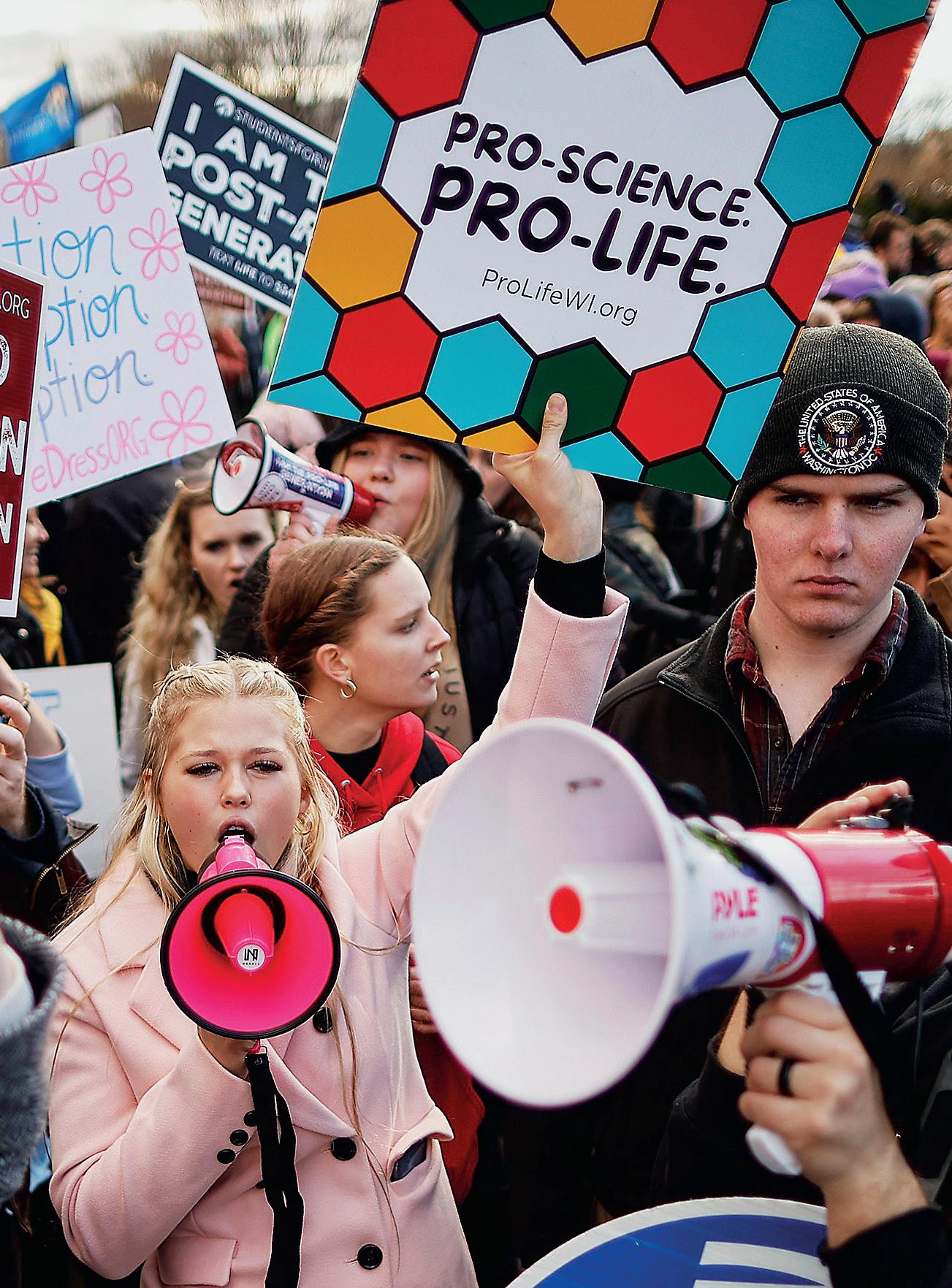
 PHOTO BY CHIP SOMODEVILLA/GETTY IMAGES
Pro-life and pro-abortion activists gather at the 50th annual March for Life rally in front of the U.S. Supreme Court in Washington on Jan. 20.
PHOTO BY CHIP SOMODEVILLA/GETTY IMAGES
Pro-life and pro-abortion activists gather at the 50th annual March for Life rally in front of the U.S. Supreme Court in Washington on Jan. 20.
“Since that Dobbs decision, 14 states have passed a total ban on abortion, another six states have severely limited abortion services, and nine other states have had their abortion bans blocked in court.”
Murray added that the consequences of the court’s decision had been “devastating” for those who considered abortion to be a woman’s “fundamental right.”
“Women are heartbroken,” she said. “They’re terrified. But they are also mad, and they are determined, and they are speaking out, and so are Senate Democrats.”
Later that day, Murray led an effort to push through four bills aimed at expanding protections for women seeking abortions and reproductive health services via unanimous consent—a move that was ultimately blocked by Republicans.
But abortion advocates aren’t the only people expressing concern over the ramifications of Dobbs.
For those who oppose abortion, the overturn of Roe has largely been considered a win. But according to pro-life advocate Abby Johnson, the ruling has had its drawbacks for the pro-life movement too.

“After Roe was overturned, there was a fear that people who weren’t as involved in the pro-life movement were going to kind of throw up their hands and say, ‘Great. OK, now we don’t have to worry about abortion anymore.’ And unfortunately, it seems like that has been the case,” Johnson told The Epoch Times.
She noted that, in recent months, there has been a marked decline in volunteerism and donations to pro-life organizations, yet the fight for life has, if anything, only gotten harder.
“In a way, we’ve made the landscape a little more difficult for ourselves because, now, instead of just one battle, we have 51 battles, if you include D.C.,” she said.
And those battles aren’t only legislative.
According to a list compiled by the conservative Family Research Council, 106 attacks on churches and pro-life organizations occurred between the May 2022 leak of the Dobbs decision and May 19, 2023. An additional 24 incidents of vandalism and harassment targeting pro-life individuals have also been reported.
Johnson, once a Planned Parenthood clinic director, now helps clinic workers to leave the abortion industry as the CEO and founder of the nonprofit And Then There Were None. And even though her staff works remotely, she noted that the organization has been forced to take extra precautions following recent threats to her safety.
“Since all this has happened, I have more security when I go out than I did before,” she said. Her organization has also taken measures to protect the identities of staff members.
Even so, after years of speaking out against abortion, Johnson said she had found such risks to be “par for the course.”
“Violence begets violence. And they are for violence against the most vulnerable people among us.”
A decrease in the number of abortions performed in the United States over the past year may also be a result of the Dobbs ruling.
A recent analysis of abortion data conducted by the pro-abortion Society of Family Planning found that more than 25,000 fewer abortions were performed in the country from July 2022 to March 2023 than were expected.
That organization held that the reduction meant “grave consequences” for women unable to obtain abortions,
“including increased economic insecurity, poorer physical health, and continued exposure to violence from the man involved in the pregnancy.”
But E.V. Osment, Susan B. Anthony Pro-Life America’s vice president of communications, shared a different perspective.
“What we have known all along is the majority of women want to keep their children,” Osment said. “They’re just hoping and looking for a way to do that.”
Many women, she noted, feel pressured by their partners and parents to abort their babies because of financial constraints. For those women, taking abortion off the table as an option could relieve that pressure.
“For us, the next move forward is to make sure that we are supporting moms and children—that we are not doing what the other side does, which is to pit the mom against the child, but we are loving and supporting them both at the same time.”
As for attitudes toward abortion, Osment noted that a recent survey conducted June 6 to 9 by The Tarrance Group indicates that most voters don’t align with Democrats who advocate for unrestricted abortion.
“Seventy-seven percent of voters agree with at least some abortion limits by 15 weeks,” she said. “And we also see, poll after poll, that Americans are
not comfortable with and do not want late-term abortions. What they want is to have abortion limited by at least the first trimester, and what we see is 12 to 15 weeks, when science proves that the child can feel pain inside the womb.”
The survey also found that 70 percent of voters support requiring parental consent for minors seeking abortions and 76 percent support the existence of pregnancy resource centers that do not perform abortions.
Additionally, 59 percent of voters said they would support federal legislation to limit abortions beyond 15 weeks gestation.
But while the public might be on board with such a measure, whether Congress would support it remains to be seen.
Last September, Sen. Lindsey Graham (R-S.C.) proposed a 15-week limit with exceptions for rape, incest, and the health of the mother, but the bill was never voted on in the Democrat-controlled Senate.
The issue of abortion has been at the forefront of U.S. politics for decades, and with a presidential election just around the corner, that isn’t likely to change soon.
In fact, abortion is already playing a prominent role in the presidential primaries.
On June 23, President Joe Biden secured the endorsement of abortion provider Planned Parenthood, which will likely be a feather in his cap as he looks to reclaim the Democratic nomination.
“President Joe Biden and Vice President Kamala Harris have been committed to fighting back against the onslaught of attacks against our reproductive freedom. And we need them to continue this critical work,” Alexis McGill Johnson, CEO and president of Planned Parenthood Action Fund, said in a statement.
“We know, clear as day, that if anti-abortion politicians gain control of the White House, they will exploit their power toward their ultimate goal: a national abortion ban. That is why we must re-elect President Biden and Vice President Harris: people we can trust to keep rebuilding a path forward because we know the journey to rebuilding our rights will be met with challenges.”
Meanwhile, Republican candidates have begun courting the pro-life vote, touting their views and relevant accomplishments.
While speaking at the Faith and Freedom Coalition Policy Conference in Washington on June 23, Florida Gov. Ron DeSantis pointed to the six-week limit he recently signed as evidence that he was “promoting a culture of life” in Florida.
At the same event, former Vice President Mike Pence called upon his fellow Republican candidates to pledge their support for a national 15-week limitation on abortion—a call former Arkansas Gov. Asa Hutchinson was happy to answer.
But one candidate who has shied away from taking a specific position on federal abortion restrictions is former President Donald Trump.
During a CNN town hall in May, he was asked whether he would support such a measure. Hedging, he replied that he would “negotiate so that people are happy.”
The former president also noted that he appointed three of the Supreme Court justices who voted to overturn Roe v. Wade.
“You wouldn’t even be having a discussion if you weren’t able to get rid of Roe v. Wade,” he said.
But while Roe is gone, for voters on the left and right, the issue of abortion is clearly not forgotten.
25,000
ABORTIONS
More than 25,000 fewer abortions than expected were performed in the country from July 2022 to March 2023.
106 on churches and pro-life organizations occurred in the year following the May 2022 leak of the Dobbs decision.
70%
A survey found that 70 percent of voters support requiring parental consent for minors seeking abortions.
59%
A survey found 59 percent of voters would support federal legislation to limit abortions beyond 15 weeks’ gestation.
76%
A survey found 76 percent of voters support the existence of pregnancy resource centers that do not perform abortions.

“In a way, we’ve made the landscape a little more difficult for ourselves because, now, instead of just one battle, we have 51 battles, if you include D.C.”
Abby Johnson, pro-life advocate
VISITOR LOGS

40 private visits put Soros Foundation representatives in position to influence US policies
By Beth BreljeThey didn’t appear on a ballot for voters to elect or reject, but many staffers of George Soros’s Open Society Foundations have the ear of high-level White House officials, and with it, influence over federal policies.


Since President Joe Biden took office, representatives from the Open Society Foundations have met privately 40 times in the executive mansion, in meetings with one to three guests, White House visitor logs show. And while it may take days or weeks for an average citizen to get a meeting at the White House approved, folks connected to Open Society often make their appointments one day in advance, or even on the same day as their visit.
George Soros, founder of Open Society,
announced in June that he was handing leadership of his $25 billion dynasty over to his son, Alexander Soros, 37. The younger Soros had already been in a leadership position in the organization. Since the start of the Biden administration, Alexander Soros, chairman of the board of the Open Society Foundations, has visited the White House 18 times. Of those visits, four were meetings in the West Wing with deputy national security adviser Jon Finer.
Alexander Soros and Finer were joined in a Feb. 9 meeting by Vieira Abramovay, director of the Latin America Program and regional director of Latin America and the Caribbean at the Open Society Foundations, and by Yasin Yaqubie, special adviser to the deputy chair of the Open Society Foundations.
The meeting was held days before Biden visited Ukraine.
Finer said in a Feb. 21 interview with
MSNBC that leading up to the president’s Ukraine visit, the National Security Council was busy planning security for the trip into a war zone for weeks. During this time, the council was also discussing what weapons to provide to Ukraine, Finer told MSNBC.
It isn’t clear what was discussed in the meeting of Finer, Soros, Yaqubie, and Abramovay. Neither The White House nor the Open Society Foundations responded to questions from The Epoch Times.
That same day, Feb. 9, Soros met with Jordan Finkelstein, special assistant to the president and chief of staff of the senior adviser to the president. The day before, Soros met in the West Wing with Mariana Adame, adviser to the counselor of the president. And on Feb. 10, Soros was back in the West Wing to meet again with Finkelstein.
Finer, Soros, and Yaqubie met on
Sept. 14, 2022, and Dec. 1, 2022. The three also met on Oct. 6, 2022, and added Ivan Krastev to the meeting. Krastev is an Open Society board member.
Yaqubie has had 14 White House meetings during the Biden administration, visitor records show, including one on Oct. 6, 2022, with Kimberly Lang, who was the national security adviser executive assistant at the time, and three meetings with Nina Srivastava, associate director for domestic personnel at the Presidential Personnel Office.
Jonathan Becker has visited the White House twice. Becker is executive vice president of Bard College and vice chancellor of the Open Society University Network, where he sits on the management committee with Alexander Soros.


“The Open Society University Network envisions a new model of global higher education—a long-lasting network with deep partnerships among diverse institutions committed to addressing global challenges collaboratively,” its website reads. Among its goals is to “incorporate civic engagement” into higher education and to “expand access to higher education at a time of growing inequities.”
Patrick Gaspard has visited the White House 10 times so far during the Biden administration. Gaspard served as U.S.
ambassador to South Africa from 2013 to 2016. He was president of the Open Society Foundations from 2017 to 2020. Currently, Gaspard is president of the Center for American Progress, a progressive think tank largely funded by the Open Society Foundations and the Foundation to Promote Open Society, which are both Soros organizations.
Thomas Perriello, executive director of Open Society–United States, has been to the White House 19 times during the Biden administration. Of those, 10 were one-on-one meetings with White House officials, including Kimberly Lang and Rachel Chiu, chief of staff at the Office of Political Strategy and Outreach at The White House, and Yohannes Abraham when he was deputy assistant to the president and chief of staff and executive secretary of the National Security Council.
Since then, Biden has named Abraham his representative to the Association of Southeast Asian Nations (ASEAN). Created in 1967, ASEAN is headquartered in Jakarta and includes the nations of Indonesia, Cambodia,
Vietnam, Thailand, Malaysia, Singapore, Philippines, Burma (also known as Myanmar), Brunei, and Laos.
Perriello also met one-on-one with then-White House policy adviser Richard Figueroa, who worked for the Center for American Progress before being hired at the White House, according to Figueroa’s LinkedIn page.
In addition to private meetings, many of these visitors have been invited to the White House for larger political and social events. For example, Nicole Wilett, chief of staff at Open Society Foundations, has visited the White House for three larger events.
Perriello attended a White House event with 231 people hosted by Biden on Jan. 6 to mark the second anniversary of the Jan. 6, 2021, Capitol breach. Perriello also attended with 196 people on Jan. 6, 2022, in the East Wing.
Perriello was also among the 448 guests who attended an event on the South Lawn of the White House on April 8, 2022, to mark the confirmation of Justice Ketanji Brown Jackson to the Supreme Court.
On Sept. 13, 2022, Perriello was on the South Lawn with 321 invitees to celebrate the passing of the Inflation Reduction Act, which included a significant amount of funding for environmental projects the Open Society Foundations supports.
The left-leaning Open Society Foundations gives thousands of grants to groups and individuals working on issues it supports, including abortion access, implementing reparation payments to racial minorities, and ending stigma against drug users.
The organization has four core interests, according to its website.
“The climate crisis demands unprecedented shifts of global investment
In addition to private meetings, many of these visitors have been invited to the White House for larger political and social events.
by both governments and the private sector,” the Open Society Foundations website reads.
Open Society supports more financial assistance from the richest countries to poorer countries to mitigate economic crises. It wants private businesses to be responsible for the well-being of their workers, communities, and the environment and to strengthen the rights of marginalized workers and the world’s refugees.
It’s also against policies that punish drug use.
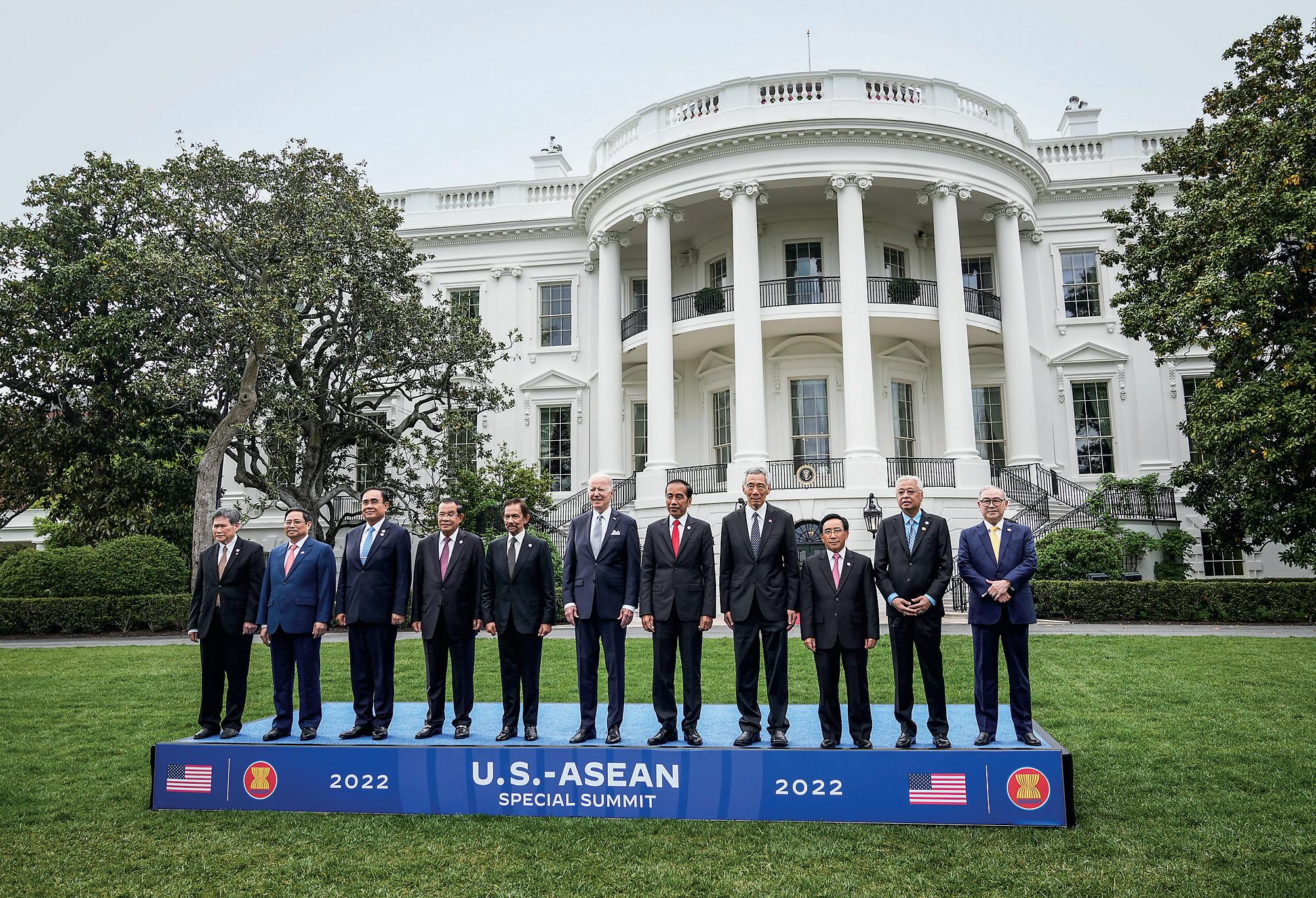
“Open Society works to advance justice-oriented drug policies that decriminalize, equitably regulate, and diminish the negative consequences of prohibition. We support the health,
safety, and social inclusion of drug-involved populations and communities harmed by coercive drug policies,” its website reads.
Open Society funds journalism, media groups, and documentaries. It supports the creation of global standards and rules for the behavior of existing corporate digital platforms, including “measures to protect user privacy and to counter hate speech and disinformation,” the Open Society website reads.
Open Society supports human rights movements, reform of judicial systems, and the promotion of democratic participation at all levels.
It funds groups that speak for com-
munities that “face embedded racism and discrimination simply because of who they are or where they came from.”
“This includes supporting movements combating institutional and structural racism, and advancing demands for reparations for unresolved historical and ongoing violence and injustice,” the website reads. “We also work toward the fair treatment of refugees and migrants, as well as efforts to fight stigma against drug users that leads to criminalization and impoverishment.”
It also advocates for LGBT communities it claims are “under fire from conservative forces” and supports groups that pursue an “intersectional feminist agenda, including advancing reproductive justice and countering transnational attacks on sexual and reproductive health rights.”

‘The state … is actually trying to turn LGBTQ+ into a religious cult,’ says Marine Corps veteran
By Alice GiordanoBacklash is growing over what many see as national LGBT observances U.S. military veterans are from the LGBT community. Pride Month has long followed Memorial Day, but U.S. Marine Corps veteran Victor Marx told The Epoch Times that this year was different, with a huge movement led by the government to swap out American flags for LGBT flags at military installations, including several Veterans Affairs facilities and cemeteries.
“I truly believe we are at a place in this country where the state—starting with the Biden administration—is actually trying to turn LGBTQ+ into a religious cult,” said Marx, who served several tours, including on the front lines in active combat against the ISIS terrorist group.
Now a minister, Marx is also the founder of All Things Possible, which provides trauma relief for veterans and civilians from militant countries. The 59-year-old likened the replacement of
Victor Marx, U.S. Marine Corps veteran
the “symbol of America” with a Pride flag to spitting in the face of veterans and families “who have lost loved ones in the line of duty.”
Terrence Hayes, press secretary for the U.S. Department of Veterans Affairs, defended the flying of LGBT flags. In a statement released to The Epoch Times, he said it’s a “symbol of VA’s commitment to inclusion and as a tribute to the service and sacrifice of LGBTQ+ Veterans, their families, caregivers, and survivors.”
According to Hayes, more than 1 mil-
lion United States military veterans are from the LGBT community.
Carl Boyanton, with six uncles who served in World War II, has long been involved in laying wreaths and flags on the graves of veterans throughout Mississippi.
He told The Epoch Times he believes that infiltrating the military with LGBT flags and national observances is part of an effort to groom Americans to accept what he called the “growing debauchery” of a movement that has nothing to do with patriotism. He pointed to activities during Pride Month such as homosexual bondage shows and other hypersexualized, explicit conduct at events “billed family friendly.”
“I respect all veterans, but Memorial Day and Veterans Day are about serving our country, not who you have sex with,” Boyanton said.
Marx and other veterans who spoke to The Epoch Times said they believe that the gay community has been hijacked by a radical movement that no longer has anything to do with gay rights.
Gays Against Groomers is one of several organizations that have made similar assertions and decried Pride Month for taking precedence over honoring veterans.
“It has to be said that it is absolutely atrocious that our ‘community’ gets an entire month (and now season in many cases) dedicated to us, while the brave heroes who gave their lives to defend our nation get only a single day. We do not want the month. Give it to them,” the group, which has protested drag queen shows and transgender procedures for children, wrote on Twitter.
In addition to Pride Month in June, October is designated LGBT History Month. There is also a Non-Binary Awareness Week, which starts on July 11, and International Drag Day (July 16).
Other LGBT days recently observed include Pansexual and Panromantic Awareness and Visibility Day (May 24); International Day Against Homophobia, Biphobia, and Transphobia (May 17); and Lesbian Visibility Day (April 26).
In March, there was a National LGBTQ Health Awareness Week, and March 31 has been designated International
“We are celebrating indoctrinating young boys to become effeminate. That’s dangerous beyond words.”
Transgender Day of Visibility. Coming up is Celebrate Bisexuality Day (Sept. 23), and the National Gay Men’s HIV/AIDS Awareness Day (Sept. 27).
LGBT History Month features National Coming Out Day (Oct. 11), and International Pronouns Day on the third Wednesday of October.
In November, Veterans Day falls between Intersex Day of Remembrance (Nov. 8), and Transgender Day of Remembrance (Nov. 20).
Outrage over the growing LGBT commemorations has even reached the liberal East Coast.
Popular Boston conservative talk radio host Jeff Kuhner recently fielded calls from listeners angry over the growing number of national observances for the LGBT community.
“They act like they fought at Normandy,” Kuhner said.
At least 2,500 U.S. soldiers died during the Normandy invasion on D-Day.
Some veterans have decried the proximity of Pride Month to Memorial Day.
“Memorial Day, which falls on Monday, is a solemn occasion dedicated to honoring the brave individuals who fought and sacrificed their lives for our country. Unfortunately, it seems that every year, this important day is overshadowed by the prominence of pride month,” Army veteran T.J. Michaels wrote on Twitter.
In Mississippi on June 5, protests erupted when U.S. flags flying over the VA Medical Center and Biloxi National Cemetery were replaced with rainbow flags, an action that was authorized by Secretary of Veterans Affairs Denis McDonough.
Boyanton said a 24-hour police guard was posted to keep watch in the cemetery to protect the flag against vandalism.
He said he asked one of the officers assigned to guard the site what would happen if he were to burn a gay pride flag.
“He told me if it was an American flag, he would have to stand down because
I was exercising my First Amendment rights, but if it was a pride flag, it would be considered a hate crime and he’d have to arrest me,” Boyanton said.
Earlier this week, veterans—including gay veterans—gathered at the Walk of Honor site in Fresno, California, to protest the replacement for the first time of one of the three flags
with an LGBT flag at the war memorial.
Established in 2017, the Walk of Honor site includes a memorial etched with 1,359 names of U.S. service members. Of them, 48 have a gold star next to their names that signifies that they were killed in action.
Until this year, the site had been marked, without interruption, by the POW/MIA flag, the American flag, and the Veterans Administration flag.
The replacement of a display of American flags and a giant pride flag at the White House to kick off Pride Month incited a firestorm of protests by veterans who also pointed out that the executive residence was unadorned for Memorial Day.
A flag swap at the Massachusetts Maritime Academy enraged at least one parent, who asked to remain anonymous. The private school, one of the most prestigious military training schools in the country, spoke with The Epoch Times but ultimately declined to comment.
Boyanton said the government’s agenda “to promote a sexualized special interest group is evidenced by the exclusion of other special interest groups.”
May was Asian American and Pacific Islander Heritage Month, he noted.
“I didn’t see any Asian American and Pacific Islander flags flown at the White House or VA cemeteries.”
Marx, who is still involved in military rescue operations in foreign countries, said he is worried that the government is intentionally emasculating the military.
Like the indoctrination going on in schools, the government, he believes, is targeting the youth that make up the military branches and the usual recruits to replenish the U.S. armed forces.
Marx pointed to an image the U.S. Marines recently posted on its social media pages of a row of rainbow-colored bullets strapped to a combat helmet.
“We are celebrating indoctrinating young boys to become effeminate,” he said. “That’s dangerous beyond words.”

A veteran likens the replacement of the ‘symbol of America’ with a Pride flag to spitting in the face of veterans and families ‘who have lost loved ones in the line of duty.’
s the u s . economy continues to struggle with high inflation and weak economic growth, concerns about the country slipping into stagflation are popping up.
Stagflation is an economic cycle marked by slow gross domestic product growth, high inflation, and a high unemployment rate. Policymakers usually find it difficult to handle such a situation because any attempt to boost or control one factor worsens others. The United States endured a bout of stagflation in the 1970s but hasn’t experienced another one since.
But now, experts are becoming apprehensive. All three relevant economic data—GDP growth, inflation, and the unemployment rate—suggest that stagflation may be around the corner.
Following the pandemic recovery, the country has registered depressing GDP growth over the past year. The first two quarters of 2022 registered negative growth. Though the third quarter saw GDP rising by 3.2 percent, it was the second-slowest growth rate since the third quarter of 2020.
Moreover, the quarterly growth rate has been declining since the third quarter of 2022, falling from 3.2 to 2.6 percent in the fourth quarter, and then to 1.3 percent in the first quarter of 2023.

On the inflation front, even as the annual inflation rate dipped to 4 percent in May after peaking at 9.1 percent in June 2022, it still remains way above the Federal Reserve’s target of 2 percent.
Annual inflation is more than double the 1.4 percent rate in January 2021, when Joe Biden became president. Since April 2021, annual inflation has remained at or above 4 percent every single month.
With regard to the unemployment rate, it has remained at or above 3.4 percent for more than a year. In May, the unemployment rate hit 3.7 percent, which is the highest level in a year.
The stagflation of the 1970s was mostly a result
of three events: a dovish policy by the Fed that tolerated high inflation in exchange for lower unemployment, rising government spending due to the Vietnam War and funding social programs, and rising prices due to an oil embargo and surging commodity prices.
At present, the U.S. economy is undergoing a similar scenario. Instead of tolerating inflation, the Fed is going all out against it, even at the cost of lower employment. Government spending has risen over the past years due to the COVID-19 pandemic, while commodity prices remain elevated. The scenario essentially sets up the stage for stagflation.
Multiple economic experts have raised alarm bells about the United States potentially facing a stagflation scenario. In April, economist Mohamed El-Erian warned in a Financial Times article that the series of bank collapses in March has raised the odds of a recession and stagflation
The Fed is currently going all out against inflation, even at the cost of lower employment.
affecting the United States.
“The flashing red light resulting from a speedof-light run on the U.S. banking system, or what economists broadly refer to as financial contagion, is behind us,” he wrote.
“Instead, red has become a flashing yellow due to the slower-moving economic contagion whose main transmission channel, that of curtailed credit extension to the economy, increases the risk not just of recession but also of stagflation.”
In an April 20 podcast, former Treasury Secretary Lawrence Summers also said that stagflation is a “real risk” facing the U.S. economy.
“Given where inflation is right now and given the downward pressures on the economy, I certainly think stagflation is a meaningful risk right now, and it’s probably a risk that’s underpriced in the markets,” he said.
More recently, John Waldron, president and chief operating officer at Goldman Sachs, warned about “mini” stagflation in the United States while speaking during a Bloomberg Invest conference in early June.
“If you want to paint a more cautious picture, you would say we might have a mini stagflation-

ary scenario. It might not be massive stagflation, but if you have sluggish growth ... and inflation doesn’t really get down below 3 percent and rates have to stay 3-plus percent for a while, that’s not going to be called a recession, but it’s not going to feel great,” Waldron said.
“That’s the scenario we kind of plan for, and worry about, because that’s a scenario that could persist for a while where you just get sluggish growth.”
The Federal Reserve has aggressively raised rates over the past year in a bid to contain inflation, thus pushing up its benchmark interest rate from 0.5 percent in April 2022 to a current range of 5.0 to 5.25 percent.
In June, the Fed kept its interest rate unchanged, ending the streak of 10 consecutive hikes. However, it did admit that two more rate hikes may be on the cards this year.
During a Risk Live conference in London on June 7, Anil Jhangiani, head of investment risk oversight at USS Investment Management, raised concerns that a stagflation scenario might end up making central banks stick to raising interest rates and thus risk “more policy errors.”
“If central banks still need to push rates up in 2023, and we have a prolonged stagflation environment, that’s really going to hit both bonds and equity portfolios, potentially,” he said, according to Risk.net.
“If we are in a world of stagflation for longer, inevitably, that leads to a lot of discontent, wage spirals—in part what we are seeing now—and I think that can only aggravate political risk.”
During stagflation, Americans have to grapple with consistently rising costs of living and lower employment opportunities. As the economy is sluggish and costs are high, companies tend to lay off employees. Both firms and individuals have to spend more to service their debts.
With the U.S. economy sluggish and costs still high, both firms and individuals must spend more to service their debts.

GDP growth, inflation, and the unemployment rate suggest that stagflation may be around the corner.


A young man plays Grand Theft Auto IV. In a game such as this, players are rewarded for carjacking random victims using a variety of weapons, which could be very damaging for a child who may not be able to distinguish the game’s realism from reality, a military veteran says.
 PHOTO BY CATE GILLON/GETTY IMAGES
PHOTO BY CATE GILLON/GETTY IMAGES
A psychologist warns that computer games feature same conditioning as military training
By Michael Clements
s mass shootings make headlines, one man who has spent years studying what it takes to get men to kill said it’s clear that violent entertainment is a how-to manual for many killers.
According to retired U.S. Army Lt. Col. Dave Grossman, violent media mold the character of their consumers just as military basic training conditions soldiers to kill. Grossman is a psychologist, author, and public speaker. Grossman said the media, especially computer games, normalize abnormal behavior to the point that injury and death are rewarded.
“This is pathological play; this is dysfunctional play,” Grossman told The Epoch Times.
A 2015 resolution passed by the American Psychological Association (APA) backs his claim.
“Scientific research has demonstrated an association between violent video game use and both increases in aggressive behavior, aggressive affect, aggressive cognitions and decreases in prosocial behavior, empathy, and moral engagement,” the resolution reads.

In an email to The Epoch Times, APA spokesperson Kim Mills confirmed that this is still the organization’s position. But Grossman’s detractors said the connection between violent entertainment and actual violence is tenuous.
Chris Ferguson, professor of psychology at Stetson University in DeLand, Florida, has conducted meta-analyses of several studies. He said the studies generally find a weak connection, if any.
“We’re really just not finding any evidence,” Ferguson told The Epoch Times.
Grossman disagrees. He said the games teach killing in the same way that soldiers are trained, through “operant conditioning.”
Russian psychologist Ivan Pavlov pioneered this technique in the late 1800s when he realized that the dogs he used in his work would salivate whenever the assistant who fed them entered the laboratory.
Pavlov developed the technique to get a specific reflexive reaction to certain stimuli. In law enforcement training, this is called “muscle memory.” It makes drawing a weapon and giving commands an automatic response to threatening or hostile behavior.
After World War II, the U.S. military devised training methods to get soldiers to fire their weapons in combat after military historian Brig. Gen. S.L.A. Marshall released data indicating that only 15 to 20 percent of soldiers in World War II fired their weapons in battle.
Grossman says that most people have an internal “safety switch” that controls violent impulses. He said it’s an evolutionary mechanism to preserve the species that manifests as a reluctance to shoot an enemy even though that enemy may shoot them.
In recent years, World War II veterans and historians have disputed Marshall’s data. They said the United States would have lost the war with a firing rate as anemic as 20 percent. In addition, historians have reviewed Marshall’s claims and found many of them to be false. This included his account of his war experiences.
Grossman countered that there are studies
9 HOURS
TEENAGERS CONSUME some form of entertainment media an average of nine hours a day, according to an article published in Pediatrics.
Some teenagers say they play more than 40 hours of video games per week, according to a 2017 article.
that back Marshall’s figures.
Whatever the truth, U.S. military leaders initially accepted his data. They changed their training regimen based on Marshall’s numbers; Grossman said the training program became an example of classic conditioning.

Soldiers no longer take aim at bull’s-eye targets on a traditional range. They now stand in a foxhole overlooking a simulated battlefield with wrecked vehicles, fallen trees, and bomb craters.
As man-shaped targets pop up from behind cover, the soldiers are told to “engage the closest target” until it drops. They repeat the action for the next target. In addition to the immediate re-
ward of the target falling, soldiers receive medals marking their success based on the number of targets they hit. This work-reward cycle is the conditioning meant to turn off the soldiers’ internal safety switch.
The soldiers are also given training on the rules of engagement and when it isn’t permissible to fire.
Grossman said he can attest to the effectiveness of the training. He said there are data to indicate that firing rates in Vietnam approached 90 percent. Grossman said the average first-person shooter game provides similar training.
With realistic sounds, constantly improving computer graphics, and instant rewards, gamers are desensitized to bloody violence and crime while associating the activity with pleasure and fun. In addition, Grossman points out that soldiers train only for specific periods, while the computer gamer usually sets his own schedule.
A November 2017 article in Pediatrics, the American Academy of Pediatrics journal, said that teenagers consume some form of entertainment media an average of nine hours a day.
“Video games, in particular, have increased in popularity, with some teenagers reporting that they play [more than] 40 hours per week,” the article reads.
Ferguson countered that millions of people play games and never kill anyone other than their digital enemies. He said he believes that the threat is overblown by hyperbolic media coverage of the mass killings and a desire to place blame. According to Ferguson, most gamers want to relax and have fun.
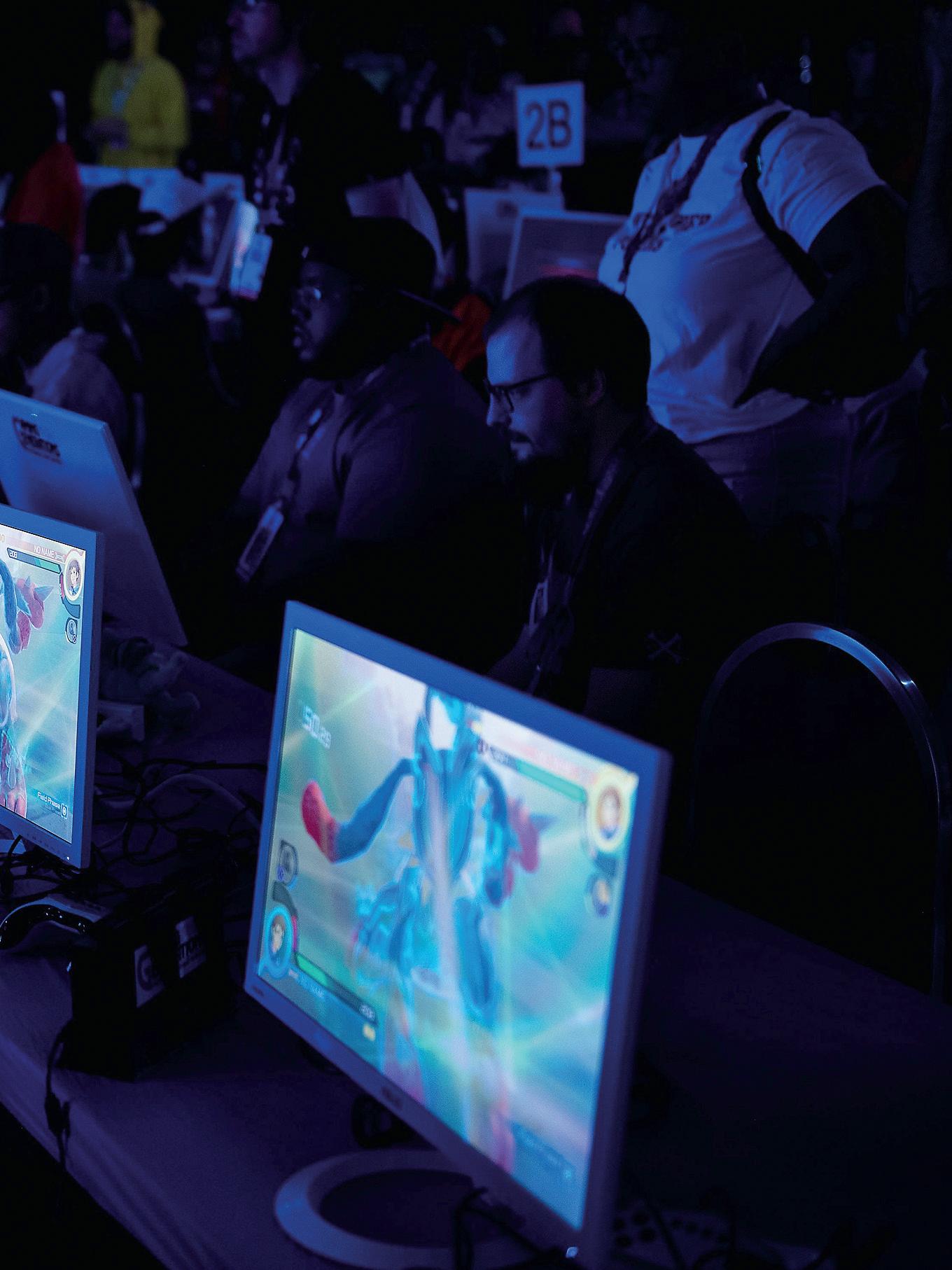
“This is pathological play; this is dysfunctional play.”
Lt. Col. Dave Grossman, psychologist
“When people know that what they’re consuming is fictional, they don’t really learn from it. Our brains are able to distinguish the reality of a situation and assign different values to it,” Ferguson said.
Grossman said that fun is part of the problem. In the immensely popular “Grand Theft Auto” series, players are rewarded for carjacking random victims using a variety of weapons. Each shooting is accompanied by spurting blood, cries of pain, and increasing scores.
Players may also have sex with prostitutes in the game and earn status by beating or killing the prostitutes to get their money back. Grossman said this could be very damaging for a child or young adolescent who may not be able to distinguish the game’s realism from reality.
Still, Ferguson pointed out that critics of computer games are very selective about the crimes for which they blame the games. He said that when two middle-aged Asian men committed separate mass murders in two California dance studios or when a 64-year-old killer shot into a concert crowd in Las Vegas, no one talked about their computer game activity.
Likewise, the killer who went on a rampage at Sandy Hook Elementary School in Connecticut in 2012 was known for his love of computer games. His favorite was the nonviolent game “Dance Dance Revolution,” in which the player must step on specific pads on the floor in time with the game’s soundtrack.
“[Computer games are not] the primary issue we should be focused on. I don’t think responsible gun owners are the problem here either,” Ferguson said.
He said he believes that building and funding mental health facilities is a better solution to explore.
Grossman agreed that mental health care is essential. But he said it’s incumbent upon the media to take responsibility for its marketing and handling of violent content. He said that computer games get the lion’s share of the blame but that movies and television programs also cause problems.
“It’s time for the media to man up and accept some responsibility,” Grossman said.
And if legislators were to regulate these violent media, it wouldn’t be the first time.
In 1897, prizefighting was illegal everywhere except Nevada. However, courts had ruled that films of prizefights didn’t violate federal law. So local officials got to regulate the practice. According to the website StudioBinder.com, Maine outlawed violent films. Anyone showing a prizefighting film could be fined $500.
Filmmakers challenged Maine’s law on First Amendment grounds. In the 1915 Supreme Court case Mutual Film Corp. v. Industrial Commission of Ohio, the high court ruled that the First Amendment did not cover movies.
The court ruled that film was an entertainment business and could be regulated. For the next 37 years, movies would be subject to government censors.
In 1952, the U.S. Supreme Court heard Burstyn v. Wilson. New York state had revoked Joseph Burstyn’s license to distribute the Italian film “The Miracle” because it was sacrilegious.
The court ruled that the industry had changed significantly since 1917. Film had become a means of affecting the culture and promoting ideas, so it did get First Amendment protection. This protection was extended to computer games in the 2011 case Brown v. Entertainment Merchants Association (now known as OTT.X).
In that case, a California obscenity law banning the sale of violent computer games to mi-
The U.S. military devised training methods to get soldiers to fire their weapons in combat, after data indicated that only 15 to 20 percent of soldiers in World War II had fired their weapons in battle.

nors was struck down because the state failed to connect video game violence and actual violence. In addition, the industry had a voluntary rating system that parents could use to determine which games were suitable for their children.
Supreme Court Justice Antonin Scalia wrote for the majority that violence in children’s entertainment was nothing new.
“Our cases have been clear that the obscenity exception to the First Amendment does not cover whatever the legislature finds shocking, but only depictions of sexual conduct,” Scalia wrote. “Grimm’s Fairy Tales are grim indeed.”
Representatives of OTT.X didn’t return calls or emails seeking comment.
Grossman said the court’s decision ignores some fundamental truths.
While there has long been violent content in children’s entertainment, he said there’s a clear difference between the coyote trying to drop an Acme anvil on the roadrunner and a computer-generated gang member shooting a policeman with a machine gun. Both may be protected speech, but only one looks real to a child.
According to Grossman, if media truly didn’t affect behavior, there would be no such thing as an advertising industry. He said media denials are cynical attempts to shirk responsibility. The situation has grown more dire since 2011, he said.
Grossman said his research shows that shooters choose their targets based on several factors—and media figure in to at least one of those.
“One of the motivations in these crimes is fame,” Grossman said.
To get the media attention they crave, shooters usually choose targets for the maximum number of victims. It’s believed the Sandy Hook attacker chose that school because the victims would be unable to fight back and killing children would draw the most outrage.
In 2012, the killer of 12 people in Aurora, Colorado, chose a movie theater showing the latest Batman film because it would be full of unarmed victims. The theater had been designated a “gunfree zone.”

According to the Crime Prevention Research Center’s (CPRC) website, that shooter decided against attacking an airport because security was too tight. He wrote that he would also avoid shooting police because “they will kill you.”
The CPRC was founded by John Lott, an economist, researcher, author, and public speaker.
Lott, who is also an Epoch Times contribut0r, said at a seminar at the National Rifle Association’s Annual Meetings and Exhibits in Indianapolis on April 15 that most mass shooters have two goals.
“In general, 72 percent of shooters express no political views. It’s very clear that they want to commit suicide, and they want media attention,” Lott said.
He pointed out that a person carrying a gun in a gun-free zone in Tennessee could get six years in prison. The killer who attacked the Covenant Presbyterian School in Nashville on March 27 killed six people. Because Tennessee is a death penalty state, Lott wondered how much of a deterrent six years would be.
“It’s like there’s no penalty for these people,” Lott said.
Grossman said this doesn’t bode well. He predicted that if no steps are taken to address the issue, mass killers will select more shocking targets.
“I pray that I am wrong.”
In 2012, the killer of 12 people in Aurora, Colo., chose a movie theater showing the latest Batman film because it would be full of unarmed victims.
Video games teach killing in the same way that soldiers are trained through ‘operant conditioning,’ a veteran says.
If temperatures hit unseasonable highs this fall and winter, blame El Niño, not fossil fuels, a group of climate analysts says.
Flying in the face of the prevailing narrative on climate change, a recent report on El Niño argues that the Pacific weather phenomenon corresponds more closely than CO2 emissions to shifting temperature patterns and is the more likely cause of temperature changes.
“El Niño is happening now; it will get warmer; we will see some record tem-
peratures; we will see some additional weather related to it,” climate analyst and meteorologist Anthony Watts told The Epoch Times. “Significant increases will begin in the fall or early winter, which is typically the time that this phenomenon peaks.”
El Niño refers to a warming trend in the Pacific Ocean, leading to warmer temperatures in North and South America that can last as long as several years. La Niña is the reverse of this process.
“El Niño is a natural event; it’s driven by changes in winds at the equator,”
Watts said. “Basically, what happens is that it roughs up the surface of the ocean, which allows the surface to absorb more solar radiation, and therefore warm up. So it’s entirely a physical mechanism based on winds.”
The climate change narrative, by contrast, argues that higher temperatures are caused by CO2 emissions, primarily from burning fossil fuels, which trap heat in the earth’s atmosphere. These emissions have been rising steadily over the past century, and average temperatures have also increased over this peri-

A
 By Kevin Stocklin
By Kevin Stocklin
od. But some experts say the correlation isn’t as convincing as climate change advocates claim.
“While it doesn’t influence a large part of the world, it does seem to have significant influence on temperature,” Greg Wrightstone, a geologist and the executive director of the CO2 Coalition, said.
Analyzing temperatures compared with El Niño activity and atmospheric CO2 levels shows that “while CO2 continues to increase at a pretty steady rate, [temperature] spikes don’t seem to be driven at all by CO2-driven warm-
ing,” Wrightstone said. “Virtually all of these El Niño events drive global temperature spikes,” typically with a lag of several months.
“The only exception, interestingly, is 1991 to 1995,” he said. “We had a strong El Niño, and it looks like it was canceled out with the eruptions of Mount Pinatubo and Mount Hudson, which have a cooling effect. ”
“We had a number of strong El Niño events in the last 20 to 30 years, in particular, the 1998 and the 2015–2016 El Niño,” Watts said. “Both of those
“Climate activists are dishonestly attempting to lead people to believe that these are the hottest temperatures ever in human civilization.”
James Taylor, director, Center for Climate and Environmental Policy, Heartland Institute
events caused a dramatic warming of the Pacific, and that warming gradually spread out across the globe.
“But when we were in a La Niña pattern, since 2015, temperatures dropped significantly and globally. And so, that does not correlate with CO2 being the main driver of temperature. We would not see a global cooling from 2015 to the present.”
“We were in a cooling trend from the mid-‘40s until the late ‘70s, all while CO2 levels increased,” Wrightstone said. “That period from the late ‘40s to the late ‘70s was La Niña-dominated cooling. And then just as we started getting into an El Niño-driven period, we went into this warming term period from the late 1970s until today.”
According to Steve Milloy, a senior fellow at the Energy and Environment Legal Institute, the “global warming narrative” states that “because emissions cause and drive warming, and emissions are bad, all emissions must be eliminated and we must get to net zero.”
“We have put 500 million tons of emissions into the atmosphere since 2015,” Milloy said. “This is a 17 percent increase in industrial era CO2 since 2015, but there’s been no warming.
“In fact, it’s been slightly cooler. And the reason for this [is] there’s been a series of El Niños since 1908. El Ninos drive temperatures up, and then temperatures basically drift down until the next El Niño.”
Many advocates of the climate change narrative point out that the trend over the past century does show a long-term pattern of rising temperatures, despite short-term fluctuations.
According to the National Oceanic and Atmospheric Administration (NOAA), a federal scientific and regulatory agency, average global surface temperatures have increased by 2 degrees Fahrenheit (1 degree Celsius) since 1880.
This increase “might seem small, but it means a significant increase in accumulated heat,” the NOAA states. “That extra heat is driving regional and seasonal temperature extremes, reducing snow cover and sea ice, intensifying heavy rainfall, and changing habitat ranges for plants and animals—expanding some and shrinking others.”

But James Taylor, director of the
Watts,Heartland Institute’s Center for Climate and Environmental Policy, said that much of the global warming narrative is based on a selective analysis of global temperature data. Indeed, while the two temperature graphs showing average temperatures since the late 1800s look dramatically different, they are based on data from the same source, the NOAA, although the vertical axes use different units.
“When you hear the term, ‘the hottest years on record,’ it’s because they conveniently defined the record as just the past 100 years,” he said. “Climate activists are dishonestly attempting to lead people to believe that these are the hottest temperatures ever in human civilization. It’s simply not the case.”
Taylor cited peer-reviewed data from the European Science Foundation showing global temperatures over the past 2,000 years, in which “you see a mi-
“We see people actively pushing cherry-picked charts and ignoring others because they know that’s going to get continued funding and continued attention.”
Anthony
climate analyst
nor increase in temperatures as all the warming of the past 150 years.” He also cited data from the U.N. Intergovernmental Panel on Climate Change, which show similar trends.
“But it leaves us much cooler than has been the case for the vast majority of time that human beings and human civilization has existed,” Taylor said. “The Earth does not have a fever, even during the El Niño years; the earth has a cold.”
While there are data both in support of and against the theory of CO2-driven global warming, this narrative has been declared “settled science,” and much of current government policy, including new EPA emissions rules, supports it. In addition, hundreds of the world’s largest corporations have signed pledges with global climate clubs such as Climate Action 100+ and the Glasgow Financial Alliance
for Net Zero (GFANZ) to reduce the use of fossil fuels.
But according to Watts, “there is a public consensus, and then there is a private consensus.”
He hosts a website on global warming and climate change called WattsUpWithThat.com, and “hundreds of experts comment on that website on a daily basis,” he said. “So it’s been a collective learning experience.”
The private consensus, Watts said, is: “Yes, there’s climate change, but it’s not a crisis.”


“But a lot of people simply don’t want to come out and say this because they’re excoriated for doing so; they get labeled by people that are activists as being climate deniers or shills of big oil,” he said.
According to Watts, climate science has “become a crusade” for those who support the CO2-climate-change narra-
tive. “Some of them truly believe that they’re going to save the planet.”
“There’s a term for it called ‘noble cause corruption,’” he said. “It actually came from the police, where they would plant evidence because they ‘know’ the perp was guilty, so they plant evidence on him to get a conviction.
“The same kind of thing happens in climate science. We see people actively pushing cherry-picked charts and ignoring others because they know that’s going to get continued funding and continued attention.”
Milloy also disputes the notion that the global warming narrative is “settled.”
“There’s no such thing as a consensus in science,” he said. “Science is not done by consensus.”
“El Niño has been going on for millennia, before we even noticed it,” Watts said. “So don’t freak out. It’s weather, and yes, it’ll get cooler after it’s over.”
The development of synthetic human embryos is raising legal and ethical issues
By Irina AntonovaScientists reported a breakthrough in creating synthetic human embryos without the use of eggs or sperm but now face legal and ethical issues.
They claim to have created model embryos using stem cells and that those embryos resemble early stages of human development, which can be used in the studies of human genetic disorders.
“We can create human embryo-like models by the reprogramming of [embryonic stem] cells,” said professor Magdalena Zernicka-Goetz from the University of Cambridge and the California Institute of Technology, describing scientists’ work in a plenary address at the International Society for Stem Cell Research’s annual meeting in Boston.
However, this groundbreaking work was quick to bring up serious legal and ethical issues, as in the UK and other countries, such lab-grown entities go against current local legislation.
So far, scientists are legally able to do scientific research in the lab only until the human embryo is 14 days old. After that period, they can monitor an embryo’s course of development only via pregnancy scans or if the embryo was donated for research.
The Warnock Committee proposed this rule in 1984, arguing that within 14 days of fertilization, the embryo could be regarded as a collection of cells.
Scientists call these 14 days a “black box” period, as it’s very difficult to monitor the human embryo’s development

in its initial stages, which is needed to find answers to many questions regarding abnormalities, diseases, and so forth. Hence, their motivation to create a synthetic human embryo.
So far in their work, Zernicka-Goetz’s team and the Weizmann Institute of Science in Israel have shown that they can create from mice stem cells embryo-like
If human synthetic embryos are to develop into embryo-like structures that lead to forming fetuses and mature human beings, we would be confronted with legal and ethical issues.
structures with beating hearts, intestinal tracts, and the beginnings of a brain.
Efforts are now in place to replicate this success with embryos derived from human stem cells. The full details of this latest work at the Cambridge–Caltech lab are yet to be published in a journal paper.
At her talk, Zernicka-Goetz explained that her team grew from a single stem cell the model structures of an embryo at the stage known as gastrulation, which is when the embryo starts to form multiple layers and sets up the human body’s basic axes.
Although at this stage the human embryo doesn’t yet have the beginnings of a brain, gut, or beating heart, the tested model embryo shows the presence of cells that are egg and sperm precursors.
“Our human model is the first three-lineage human embryo model that specifies amnion and germ cells, precursor cells of egg and sperm,” Zernicka-Goetz said.
Previous efforts to implant synthetic mice embryos into the wombs of female mice didn’t result in the development of live animals. The result with synthetic embryos from monkeys proved similar.
Thus, scientists don’t know if the normal development of synthetic embryos is possible and whether the obstacles are just technical or have a more fundamental biological base.
However, these achievements are facing legal and ethical issues. Currently, it’s illegal to use human synthetic embryos clinically, as it’s against the law to implant such embryos into a patient’s womb.
If such human synthetic embryos are to develop into embryo-like structures that lead to forming fetuses and mature human beings, we would be confronted with the question of what their moral status would be, which is what the scientific community is also concerned about. Some key points to consider are as follows:
• Status and rights: Determining the moral and legal status of synthetic human embryos is complex. The question arises as to whether they should be granted the same rights and protections as natural human embryos.
• Human dignity: Synthetic human embryos may be created solely for research purposes, and there are concerns about treating human life as a mere resource or commodity. Critics argue that the creation and manipulation of embryos for experimentation undermines human dignity and respect for life.
• Consent and informed choice: Synthetic human embryo research, requiring genetic material donors, prompts informed consent queries.
• Safety and potential harms: The risks and potential harms associated with creating and manipulating synthetic human embryos need to be carefully evaluated.
• Implications for human reproduction: The development of synthetic human embryos could have significant implications for human reproduction, including assisted reproductive technologies, genetic engineering, and potential applications in cloning, which raise ethical concerns about the potential for misuse, exploitation, or unintended consequences.
Synthetic embryos and cloning are both related to the field of reproductive biology and involve the creation of organisms, but they’re distinct processes with different goals and methods.
In broad terms, synthetic embryos are used for the purpose of research and may not result in the production of a whole organism, whereas the purpose of cloning is to reproduce the entire organism.
However, there may still be ethical discussions surrounding the use of human cellular material and the potential applications of synthetic embryos.
Synthetic embryos are typically created through a combination of cellular reprogramming techniques, such as induced pluripotent stem cell technology, and various laboratory procedures to mimic the developmental processes of a natural embryo.
Cloning involves the replication of an entire organism or specific parts of it. The most well-known method of cloning is somatic cell nuclear transfer, by which the nucleus of a somatic (nonreproductive) cell is transferred into an egg cell that has had its own nucleus removed. This reconstructed egg is then stimulated to develop into an embryo and, under certain conditions, implanted into a surrogate mother for further development.
Particularly when applied to humans, cloning raises numerous ethical questions and concerns. These include issues related to individuality, identity, consent, the potential for exploitation, and the moral status of cloned individuals.
Both synthetic embryos and cloning are active areas of scientific research, and their regulations can vary across different jurisdictions. Ethical and moral considerations are crucial factors to be considered, especially in today’s society.
Ildem Akerman, associate professor of functional genomics at the University of Birmingham, said: “These findings [on synthetic human embryos] suggest that we would soon develop the technology to grow these cells beyond the 14 day limit. ... Nevertheless, the ability to do something does not justify doing it.”

Researchers take a closer look at intestinal bacteria found in Japanese centenarians
Researchers discovered a distinct gut microbiome in examining 195 centenarians from Japan and Sardinia that may unlock the secret to this segment of the population’s exceptional longevity, a new study published in Nature Microbiology says.

This research represents a significant leap forward in understanding the pivotal role played by the gut microbiome in safeguarding health and combating diseases.
“We are always eager to find out why some people live extremely long lives,” first author of the study Joachim Johansen, from the Infectious Disease and Microbiome Program at the Broad Institute of MIT and Harvard, said in a statement. “Previous research has shown that the intestinal bacteria of old Japanese citizens produce brand-new molecules that make them resistant to pathogenic—that is, disease-promoting—microorganisms.”
Johansen further emphasized that the protective properties of these people’s unique microbiome likely contribute to their extended lifespans.
The gut microbiome consists of trillions of microorganisms (bacteria, viruses, fungi) in the human digestive system. Unlike other parts of the body, it’s highly dynamic and responsive to environmental factors, such as diet, medication,
and stress.
Researchers found that viruses are crucial in maintaining a healthy microbiome and overall health.
According to the study, among three groups—younger adults, people between 60 and 99, and centenarians— centenarians had the most diverse virome (collection of viruses), including previously unknown viruses associated with the gut bacteria Clostridia.
These viruses primarily infect bacterial cells, and given the many bacterial types in our intestines, there are numerous bacterial viruses.
The researchers have already used a specially designed algorithm to map the intestinal bacteria and bacterial viruses
in centenarians, aiming to understand the dynamics of the gut flora and identify beneficial bacteria for promoting health and longevity.
Previous research has linked the gut microbiome to various health outcomes, such as obesity, heart disease, and mental health issues. Although the mechanisms aren’t fully understood, microorganisms in the gut likely influence the immune system and other organs to maintain healthy functioning and protect against disease.
According to a recent study, when a virus infects a gut bacterium, it can enhance the bacterium’s strength. The viruses found in healthy Japanese centenarians contained genes that boosted
bacteria and facilitated the transformation of specific molecules in the intestines, stabilizing the gut flora and reducing inflammation.
In an email interview with The Epoch Times, Colby Kash, chief operating officer and co-founder of Camelot BioCapital and author of “The Autoimmune Plague: How to Regain Sovereignty Over Your Body and Life,” noted the importance of a specific substance associated with a virus identified in the centenarian microbiome study.
“The additional genes [found in the viruses] supported the production of hydrogen sulfide, which is known to have a beneficial longevity effect in the right amounts,” Kash said.
According to research, fasting encourages hydrogen sulfide production, which may be why it shows certain health benefits.
This compound supports intestinal resilience and resistance to gut pathogens.
Does the degradation of the microbiome cause the aging process, or does the aging process cause the degradation of the microbiome?
Similar to how the microbiome differs in those who are overweight or have certain autoimmune diseases, it seems that there’s a two-way relationship, Kash told The Epoch Times.
“Aging may contribute to a shift in microbiome, and microbiome shifts may contribute to aging,” he said.
Kash also said the disease state and signaling in the rest of the body can influence the microbiome and that an imbalanced microbiome can contribute to overall health issues.
For example, individuals with post-traumatic stress disorder experience the chronic release of neurotransmitters and hormones because of psychological trauma, which can potentially alter the microbial environment.
“While in the opposite direction, an overgrowth of a pathogenic bacteria can inhibit vagal nerve stimulation to the brain, resulting in anxiety or insomnia,” he said.
Several factors stand out as potential causes for microbiome changes as people age, including a sedentary lifestyle, decreased production of hormones such as testosterone and growth hormone, and antibiotics use.
A recent study revealed that although antibiotic use has revolutionized medical care, these drugs can significantly affect microbiome health, adversely affecting overall well-being.
Antibiotics disrupt the microbial balance, compromising both the networking within the bacterial community and the host–microbiota relationship. This disruption leads to the emergence of antibiotic-resistant bacteria, making clinical treatment challenging.
Kash highlighted the significance of a diverse and robust microbiome, explaining that it fosters stability and enables beneficial microbes to outcompete harmful ones.
According to Kash, the study published in Nature Microbiology identified a health-boosting effect that can be promoted by modifying eating patterns.
“The paper mentioned the virome led to an increase in lytic activity,” he said. “This is when the body recycles old damaged cells and organelles. This can also be achieved via fasting.”
Other ways to improve the gut microbiome include:
• Eating a diverse diet: Recent research suggests that a diverse diet leads to a more diverse and adaptable microbiome. It’s advised to consume a range of plant- and animal-based foods.
• Focusing on plant-based foods: Beneficial bacteria such as Bifidobacteria can reduce intestinal inflammation and promote gut health. Consuming fruits and vegetables has been show to increase Bifidobacteria levels in humans.
A diet rich in fermented foods, such as yogurt, kefir, fermented cottage cheese, and kimchi, has been found to enhance microbiome diversity.

• Eating fermented foods: A 10-week diet rich in fermented foods, such as yogurt, kefir, fermented cottage cheese, and kimchi, has been found to enhance microbiome diversity and improve immune responses, according to Stanford University researchers.


“The intestinal bacteria of old Japanese citizens produce brand-new molecules that make them resistant to pathogenic [microorganisms].”Joachim Johansen, senior scientist, Infectious Disease and Microbiome Program, Broad Institute of MIT and Harvard Kimchi Yoghurt Kefir
Research on 5G radiation has shown that the waves could penetrate the skin by approximately 0.9 millimeters when transmitted from 10 centimeters (4 inches) away.
PUBLIC HEALTH
WHY ARE SCIENTISTS CONCERNED ABOUT 5G?
3 out of every 4 nonindustry-sponsored research papers show an effect
BY MARINA ZHANGSince motorola introduced the first cordless handheld phone in the early 1970s, cellphones and wireless devices have become ingrained in our lives. They have evolved significantly, from basic texting to streaming videos and games.
Telecommunication networks, which use electromagnetic radiation to transmit information, have also advanced from the now-defunct 1G, which only supported voice calls, to the latest fifth-generation technology standard (5G) that promises high-speed data transfers.
However, alongside these advancements, concerns have emerged regarding potential health effects, with 5G being particularly controversial.
While telecom companies and regulatory agencies assert that no scientific evidence links cellphone radiation to health problems, many experts disagree. In 2017, 180 international scientists and doctors petitioned the European Union to conduct an independent assessment of the potential health risks associated with 5G.
But how severe are these risks?
Studies conducted since the 1970s have suggested possible links between cellphone radiation and health issues such as infertility, neuropsychiatric problems, cancer, and inflammation.
However, studies on the effects of cellphone radiation have yielded inconsistent findings, with some variations depending on the funding sources of the studies.
Research professor Henry Lai from the University of Washington had previously examined 200 studies on the biological effects of cellphone-related radiation. He found that approximately half of the studies reported no biological link, while the other half indicated a possible association.
“When you look at the non-industry sponsored research, it’s about 3 to 1—3 out of every 4 papers shows an effect,” Lai said. “Then, if you look at the industry-funded research, it’s almost opposite—only 1 out of every 4 papers shows an effect.”
Animal studies have implicated potential health risks in 2G, 3G, and 4G technologies.
A study published in 2018 by the National Institute of Environmental Health Sciences found that high levels of 2G and 3G radiation were associated with an increased risk of cancer and adverse effects on DNA in rats. The study found that rats and mice exposed to that type of radiation exhibited DNA damage in their brains and blood cells, clear evidence of heart tumors, and lower birth weights in the case of prenatal exposure.
But the study acknowledged limitations due to the use of abnormally high radiation levels that don’t reflect real-life exposure scenarios.
“The exposures used in the studies cannot be compared directly to the exposure that humans experience when using a cellphone,” said John Bucher, a senior scientist at the National Toxicolo-
gy Program and co-author of the study. However, increasing exposure levels can expedite research on long-term risks without requiring lifelong studies, Martin Pall, professor emeritus of biochemistry and medical sciences at Washington State University, told The Epoch Times. Still, most studies haven’t found conclusive evidence linking cellphone radiation to adverse health effects.
Studies on cellphone radiation published before the 5G rollout in 2019 demonstrated that placing phones near the ear resulted in the absorption of radiation by brain tissues inside the skull.
Some research has suggested a potential correlation between high cellphone usage and glioblastoma, a type of brain cancer. According to a Swedish analysis, long-term cellphone users, those who’ve had phones for more than 10 years, face an elevated risk of developing benign tumors. Notably, the risk is highest on the side of the head that comes into contact with the phone.

Nevertheless, the causal relationship remains uncertain.
Studies investigating residents living near cellphone towers and base
stations have reported complaints of neuropsychiatric problems, including headaches, memory issues, dizziness, depression, and insomnia.
Is 5G worse than its predecessors? The short answer is scientists don’t know.
While 2G, 3G, and 4G transmit radio frequency and microwave radiation, 5G emits millimeter wave radiation.
Millimeter wave radiation differs from microwave and radio wave radiation, operating at a higher frequency and facilitating faster signal transmission. However, the potential health effects of millimeter wave radiation remain unknown due to a lack of government-funded studies.
What scientists do know is that, unlike microwave cellular radiation, millimeter waves can’t deeply penetrate the body. Consequently, many scientists believe that 5G is safe.
While millimeter waves offer faster speeds, their high frequency makes them weaker and thus susceptible to blockage by leaves, rainwater, and walls. To ensure complete coverage, telecommunication companies must deploy more 5G antennas. However, since these antennas also transmit 2G, 3G, and 4G signals, the extensive rollout of 5G poses a potential health risk.

Magda Havas, who has a doctorate in
environmental toxicology, is an emerita professor specializing in the health effects of electromagnetic radiation, and is a signatory of the EU moratorium, expressed concerns regarding 5G rollouts. “What they’re doing is they’re rolling out antennas every roughly 100 meters in urban areas,” she told The Epoch Times. “People are going to be exposed to much higher levels of the normal [3G and 4G] frequencies that they were already exposed to, plus the additional millimeter waves that have not been tested for any kind of long-term health effects.”
The health effects of 5G are still a topic of debate, but Pall and Havas suggest that its millimeter radiation might have the potential to induce health issues. Although 5G’s millimeter waves may be unable to penetrate the body, they can still be absorbed by the skin. Havas said that ultraviolet lights don’t penetrate the body but can cause skin melanomas.
A study conducted in 2020 on 5G radiation demonstrated that the waves could penetrate the skin by approximately 0.9 millimeters when transmitted from 10 centimeters (4 inches) away.
Although this depth is shallower compared to 4G and 3G, the radiation intensity was significantly higher. Furthermore, 0.9 millimeters may not even be considered shallow. According to a 2008 study on millimeter waves, a penetration depth of 0.65 millimeters is sufficient “to affect most skin structures located in the epidermis and dermis,” the authors wrote.
“It’s been shown in a number of different studies that if you look at different kinds of cells—and we have many different types of cells in our body— you’ll find that some cell types are much much more sensitive to EMF (radiation) than others,” Pall said.
He further emphasized that biological heterogeneity must be considered and that simple physics can’t be used to make accurate predictions about biological effects.
While the long-term health effects of 5G remain unknown, Pall has conducted research showing that millimeter waves can trigger biological responses by altering the cells’ electrical charges.
As telecommunications networks evolve and 5G promises faster speeds and greater connectivity, the need to understand the effects on human health becomes increasingly important. The debate surrounding the potential health effects of 5G technology continues to be a subject of concern and controversy.
The potential health effects of 5G millimeter wave radiation remain unknown because of a lack of government-funded studies.
“If you look at the industry-funded research ... only 1 out of every 4 papers shows an effect [of cellphonerelated radiation].”
Henry Lai, professor, University of Washington
The U.S. flag flies in front of shipping cranes and containers in Long Beach, Calif., on March 4, 2019. Establishment media in the United States will use any excuse to encourage giving socialism a try, such as saying the free market is failing, columnist Thomas McArdle says.
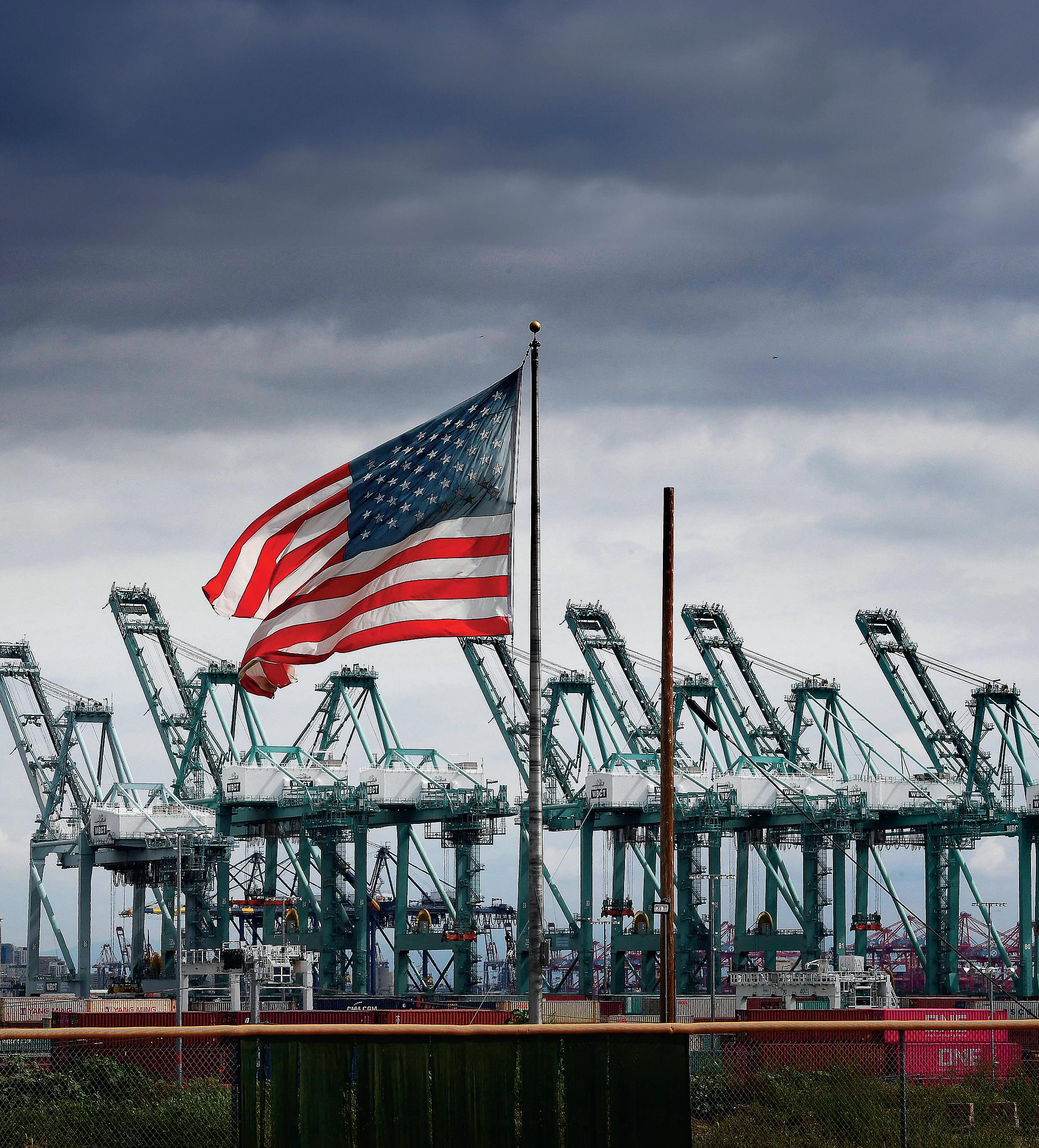
BANK REGULATORS WANT NEW POWERS
Were the bank failures caused by a lack of sufficient oversight power?


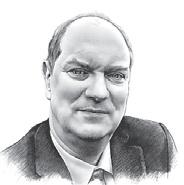
The media depict the market economy as being on its deathbed
The sunday n ew york Times two weeks ago featured a lead, front-page article titled “Failures of Globalization Shatter Long-Held Beliefs,” rattling off a litany that included COVID-19, Russia’s invasion of Ukraine, the Trump administration’s tariff-based pushback on China’s economic warfare against the free world, the 40-year-high inflation coinciding with President Joe Biden’s big-spending presidency, global warming, and financial inequality, and then crowed in not so many words that the culprit is capitalism.
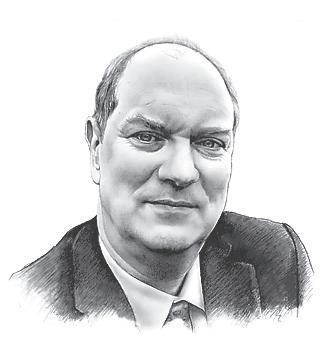
We’ve been here before, of course.
If you take the word of mainstream media, the market economy always seems to be on its deathbed, but reports of its impending expiration are greatly exaggerated. For one thing, the underlying premise of the high-profile Sunday NY Times article is flawed. It began with a slap-happy 2018 quote from International Monetary Fund Managing Director Christine Lagarde, who told supposedly “jubilant” attendees of the World Economic Forum in Davos that “the current global economy, where it stands, is in a very sweet spot.”
But Lagarde actually also warned about politicians falling prey to complacency, and economic and political events causing medium or long-term volatility.
The next part of the NY Times’ faulty premise comes from its citing a new World Bank analysis titled “Falling Long-Term Growth Prospects: Trends, Expectations, and Policies.” The newspaper cites the report’s warning that “nearly all the economic forces that powered progress and prosperity over the last three decades are fading” and that “the result could be a lost decade in the making ... for the whole world.”
What the NY Times failed to note was the report’s recommended remedy.
In the section titled “Trends are not
destiny: Policies to boost potential growth,” the analysis emphasizes that “it is possible to reverse the slowdown in potential growth through structural policy interventions. Structural policies associated with higher physical capital investment, improved human capital, and faster labor-supply growth could raise potential growth by 0.7 percentage point a year in 2022–30” both globally as well as in emerging markets and developing economies, offsetting a projected 0.4 percent decline.
as saying, “I’m not going to sit here and tell you that we’re going to guarantee purchases in 2021 or whatever date you pick.” While he was at it, Polowczyk denied that there even were shortages.
In other words, the solution is more—not less—capitalism.
The so-called “paper of record” contended that during COVID-19, “the ceaseless drive to integrate the global economy and reduce costs left health care workers without face masks and medical gloves” and caused shortages elsewhere in the economy. But how exactly would nonintegration have left us with a more responsive supply chain? And, once again, government is to blame for much of the shortages.
Reporters for The Associated Press and PBS noted in the fall of 2020 that manufacturers were worried about suffering significant losses if they invested millions of dollars in machinery, raw materials, hiring new employees, and finding new factory space “to churn out a product projected to have a shortlived demand, without assurances that the government will continue to buy their meltblown textile after the need for [N95 mechanical filter respirators] recedes post-pandemic.” They quoted Federal Emergency Management Agency Supply Chain Stabilization Task Force chief Rear Adm. John Polowczyk
Next, the NY Times declaimed, “The idea that trade and shared economic interests would prevent military conflicts was trampled last year under the boots of Russian soldiers in Ukraine.” It’s hard to imagine who this side of the discredited Francis Fukuyama (cited by the Times) is being accused here of believing that more capitalism around the world had set in place some pseudo-Marxist “end point of mankind’s ideological evolution,” to a “post-historical” world order featuring an enforceable “transnational rule of law.” Neither the ballot box nor the cable TV box, nor the smartphone armed with the Amazon app and its choice of more than 350 million products for sale, has put an end to aggressors and oppressors in the world—be they in Russia, the Middle East, or North Korea.
The remainder of the supposed chinks in the free market armor also don’t bear scrutiny. The reemergence of serious inflation after the COVID-19 lockdowns can obviously be blamed not on business but on Biden and Congress’s yanking the economy from park to fifth gear via a nearly $5 trillion spending spree.
The real failures of globalism don’t reflect poorly on the free market at all but on the socialist enterprise— elites’ attempts to move beyond trade channels between countries in hopes of weaning the masses away from their quaint attachments to nationality and local self-government, their preferences for the individual freedom of cars they own to communal mass transit the state owns, and a long list of unquantifiables that don’t always make sense to governmental bureaucracies but bring joy to people’s lives and should be kept off limits from state meddling.
Reports of the market economy’s impending expiration are greatly exaggerated.
ANDERS CORR is a principal at Corr Analytics Inc., publisher of the Journal of Political Risk. He is an expert in political science and government.

China’s transnational repression is hitting New Yorkers. On June 21, a former New York City cop, Michael McMahon, was convicted of acting as an illegal Chinese agent and stalking and intimidating a New Jersey resident.
The victim, Xu Jin, was a former official from Wuhan, China. McMahon was hired as a private investigator to surveil Xu. The former sergeant allegedly got paid for his crimes, including a $5,000 wad of cash from a Chinese official in a Panera Bread restaurant.
Bread, indeed. Plenty of it.
Through surveillance and intimidation, Beijing sought to pressure Xu into returning to China. The Chinese Communist Party (CCP) held Xu’s wife and children as virtual hostages. They weren’t allowed to leave the country and reunite the family.
One of McMahon’s co-defendants allegedly posted a threatening note on Xu’s front door: “If you are willing to go back to the mainland and spend 10 years in prison, your wife and children will be all right.”
Shocking allegations of transnational repression such as this are on the rise globally.
In the UK on June 12, Hongkongers celebrated the fourth anniversary of the 2019 democracy protests. Resisting communist China’s infiltration and political influence was a theme of the anniversary rallies.
Two people celebrating in Southampton, about 75 miles southwest of London, were physically attacked by pro-Beijing thugs as they left a rally. The thugs later posted a video of their attack, apparently assured of no accountability for their apparent criminality.
So far, they’re correct.
On June 18, an incisive 60 Minutes Australia production by Laura Spark-
es and Tara Brown detailed multiple alleged transgressions by the CCP’s “international shadow police force,” including in the Netherlands and Poland.
Beijing apparently targeted an academic, a journalist, an artist, two activists, and the mother of one of the activists. Chinese agents sent fake letters in their victims’ names that threatened violence or career-ending character assassination. Two of the CCP scams resulted in false arrests. Some of the victims received death threats.
attempt to get her fired.
“I’m always looking over my shoulder,” Vanessa told 60 Minutes. “But I just try to live a normal life because otherwise, they win, don’t they?”
Andrew Phelan, one of the two Australians who suffered false arrest, was also featured on 60 Minutes. He called the arrest “surreal, incredibly confronting.”
“It was horrible,” he said. “I wouldn’t wish it on my worst enemy.”
Phelan said he believes that the CCP’s intelligence service was behind his arrest and that he’s angry “that this is done from the shadows, anonymously.” He said the regime targets Westerners who are publicly critical of the CCP.
The parents of a Netherlands-based activist, Wang Xiyu, were detained for more than a year in a CCP attempt to force him to surrender to a secret Chinese police station in Rotterdam, Netherlands—one of more than 100 identified by the nonprofit organization Safeguard Defenders. The overseas police outposts were established in more than 50 countries around the world, including in New York City, Paris, Vancouver, and Sydney. CCP police stations can also be found in Japan, South Korea, and Peru. The stations are used to collect intelligence and even forcibly repatriate Chinese dissidents to China to be imprisoned.
Drew Pavlou, an Australian activist and critic of Beijing, received dozens of death threats. On a trip to London, he was arrested based on a fake bomb scare in his name against the Chinese Embassy. He had nothing to do with it.
Pavlou and his mother, Vanessa, were both subsequently threatened with an AU$50,000 bounty on their heads. Beijing’s thugs attacked Vanessa’s character, apparently in an
The CCP wants the world to cooperate with its version of transnational law, which is actually totalitarianism, up to and including genocide when it deems fit.
It should go without saying that cooperation with totalitarianism is dangerous for democracy. The CCP is an unelected regime and has no right to govern China, much less expect cooperation in doing so or imposing its rule abroad. The CCP’s methods are terroristic, so recognizing CCP law is tantamount to rewarding terrorism.
Victor Gao, a former diplomat from China, implied on 60 Minutes that those who violate Beijing’s interpretation of the “One China” policy, that Taiwan is an integral part of mainland China, are unsafe. He told 60 Minutes that for violators, “there will be no free haven anywhere in the world ... sooner or later justice may be served.”
The regime in Beijing conceives of “justice” as its own global hegemony. Therefore, democracies and our allies must take the strongest possible steps against each case of transnational repression. We must stop the micro-expansion and normalization of the CCP’s reach and control.
The CCP wants the world to cooperate with its version of transnational law, which is actually totalitarianism.
MILTON EZRATI is chief economist for Vested, a contributing editor at The National Interest, and author of “Thirty Tomorrows” and “Bite-Sized Investing.”

fter months of decline, May’s report on homebuilding showed a surge in activity. This news gives evidence of the emergence of the crosscurrents that inflation often brings to the residential real estate market.
On one side is the depressing effect of rising mortgage rates. Running counter is the attraction of real estate as an inflation hedge. The emergence of this second current should moderate the ill effects of high and rising mortgage rates on homebuilding and the economy generally. That’s a welcome trend. At the same time, the use of real estate to hedge inflation shows that people expect general inflationary pressures to last, and those expectations will make the Federal Reserve’s inflation fight more difficult.
Without recognizing these crosscurrents, the flow of data on residential real estate would seem contradictory and confusing. Consider that new home construction hit a high in 2021 when mortgage rates hovered at historic lows and the effects of the COVID-19 pandemic on lifestyles were still fresh. That year saw more than 1.6 million new homes started, almost a record.
Homebuilding activity began to fall after the Fed started its anti-inflation interest rate increases in March 2022. With the cost of financing rising and affordability declining, building activity fell by more than 20 percent from the 2021 high to April this year. But in May, the Commerce Department reported a 9.5 percent jump in new housing starts.
This sudden turn could, of course, reflect the variability of monthly statistics, but more likely, it speaks to the development of something more fundamental. It certainly could not reflect the Fed’s June decision to
pause in its pattern of raising interest rates. Rather, it shows that almost regardless of financing costs, people are reaching for real estate to protect their financial position.
When inflation becomes endemic, or at least when people believe it has, as seems to be the case today, real estate holds two unique allures that can overcome the effect of rising mortgage rates.
agents. That moderating effect will also extend to the economy at large. Welcome as this influence is, however, the inflation expectations underlying this drive for a real estate hedge carry their own unrelated ill effects. These inflation expectations will impart a complicating momentum to actual inflation, giving it a kind of life of its own.
First, ownership fixes the price of a significant part of the household budget. Whether a person owns property free and clear or has a mortgage with a reasonably stable interest rate, stabilizing the cost of shelter has an especially welcome effect when the cost of living is otherwise rising rapidly.
Second, history shows that real estate values more than keep up with inflation and, in most cases, outstrip the returns on other forms of investment. During the most recent great inflation, of the 1970s and 1980s, for example, inflation averaged a crushing 6.2 percent a year for the two decades. Residential real estate values gained 8.7 percent a year on average during that stretch of time, fully 2.5 percentage points faster than the rising cost of living. On both counts, buying looks attractive even if the person must stretch to shoulder the cost of financing.
The mitigating effect of this hedge buying should moderate the ill effects of high and rising mortgage rates on the residential real estate market. That will make life less onerous for builders and real estate
In addition to improving the appeal of home ownership, generally held inflation expectations will prompt earners to demand wage hikes to get ahead of anticipated price increases. Such expectations will also prompt managers to grant such demands on the expectation that they will be able to compensate the bottom line by easily raising prices. The momentum this behavior imparts to inflation makes the Fed’s job of countering price pressures much more difficult than it would otherwise be.
However hard or easy the Fed’s job, the existence of these crosscurrents should, for the time being, catch residential building and buying activity in a kind of stasis. On the one hand, the Fed’s determination to bring inflation back to its 2 percent target will impel monetary policymakers to keep interest rates, including mortgage rates, high for the foreseeable future and, given Fed Chairman Jerome Powell’s recent remarks, probably raise them still higher in the months to come. Those actions will put downward pressure on buying and building activity. At the same time, the allure of home ownership, despite increased financing costs, will create an upward push in buying and building. Activity in residential real estate will accordingly suffer little further correction but no recovery and instead bounce around recent lows for the foreseeable future.
Almost regardless of financing costs, people are reaching for real estate to protect their financial position.
Were the bank failures caused by a lack of sufficient oversight power?
In the wake of the failure of several regional banks, lawmakers are furiously at work drafting new bills to give regulatory authorities more control over banks. But some experts say that bank regulators already had all the power they needed, but failed to use it effectively.
“Every time we have a crisis on our hands, the regulatory agencies come out and say, ‘We need additional powers,’” Jelena McWilliams, former FDIC chairman, told attendees at a Cato conference on bank regulation earlier this month. “And then you ask them, what is it in your arsenal of powers that you don’t have or that you couldn’t use?”
Regulatory experts speaking at the conference disputed the current narrative that the failures of Silicon Valley Bank (SVB), Signature Bank and First Republic Bank occurred because regulators lacked sufficient oversight power. Since passing the 2010 Dodd-Frank Act in response to the mortgage crisis, 18 different capital standards have tripled the total capital requirements on larger banks.
Today, the Federal Reserve, the Federal Deposit Insurance Corporation (FDIC), and the Office of the Comptroller of the Currency (OCC) are working to mandate an additional 20 percent higher capital requirement, which some analysts fear will cause lending to contract further.

“Over the last week, we’ve had multiple bills come out of the Senate. And one of those is co-sponsored by Sens. [Tim] Scott and [Sherrod] Brown on the Senate Banking Committee,” Norbert Michel, director of Cato’s Center for Monetary and Financial Alternatives, said. “Another is by Sens. [Elizabeth] Warren and JD Vance. And then to-
day, [Rep.] Maxine Waters, [the] House Financial Services ranking member, introduced not one, but 12 bills.”
Most of these bills would give agencies the power to claw back executive compensation that is paid out several years prior to a bank collapse, Michel said.
However, according to McWilliams, the Fed, the OCC and the FDIC already have those powers. Some who want new powers for regulators have blamed the 2018 Economic Growth, Regulatory Relief and Consumer Protection Act (S.2155), which lightened some regulations on smaller U.S. banks.
“People say, ‘It’s the rollback of S.2155 that caused this,’ and then when you couldn’t find the real nexus from the provisions that were rolled back to what happened with Silicon Valley Bank, then they said, ‘it’s the execu-
tives’ comp,’” McWilliams said.
“The truth of the matter is, none of that would have prevented what happened, which is a good old-fashioned bank run. It was literally the same thing that happened in the ‘30s, people lining up—this time electronically—to get their money out.”
Michel blamed inaction, not lack of authority, for the problems.
“As you read the reports, there was no mystery; everybody was talking about it—both the Fed at SVB and the FDIC at Signature—were talking about this for years, about the socalled lapses, and they just really didn’t do anything about it,” Michel said. “It isn’t that they didn’t have the authority to do anything. For whatever reason, they didn’t.”
According to former Rep. Jeb Hensarling (R-Texas), who was chairman of the House Financial Services Committee, another significant problem with new regulatory proposals is that with every financial crisis, Congress hands more lawmaking power over to federal bureaucrats.
“The sheer volume ... of discretionary power that has now been outsourced from Article I of the Constitution to Article II is absolutely frightening,” Hensarling said, referring to the clauses that separate powers between the legislative and executive branches. “Would they use this discretion for the purpose of which it was designed, or will it be used to further politicize financial regulation, which we are seeing from the FDIC, to the OCC, to the Fed?
“We go through this cycle of financial crisis, then we increase regulation. By increasing regulation, we increase bailouts; by increasing bailouts, we have less market discipline. Then we have more boom-bust cycles, which takes us back to creating even more regulatory authority. It’s just lather, rinse, repeat.”

One significant problem with new regulatory proposals is that with every financial crisis, Congress hands more lawmaking power over to federal bureaucrats.
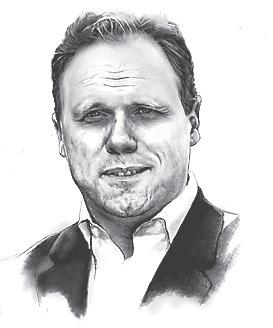
Investor sentiment is clearly bullish. The CNN Fear and Greed Index for June 18, 2023, stood at 82, which signals “extreme greed.” This is a drastic, optimistic move after closing at “greed” (56 over 100) a month before and “extreme fear” (17 over 100) only a year ago.
However, in the same period, the Citi global economic surprise index declined 12 points, with the eurozone component collapsing 123 points. The U.S. economic surprise index has also declined by 13 points.
The disastrous performance of the eurozone, which fell into recession in the first quarter, is also happening while this economic region enjoys significant tailwinds: Declining energy and commodity prices have supported the euro area’s gross domestic product, boosting the external component because of meaningfully lower imports. Furthermore, the eurozone should benefit from the expected positive impact of the massive Next Generation EU stimulus plan.
None of those effects have helped, however, which proves yet again that massive government stimulus plans hardly boost growth and productivity and are often directed to politically favored sectors with little real effect on jobs or growth.

This is hardly a surprise, as the Juncker Plan, an investment plan for Europe that was launched in 2014, and the U.S. Growth and Jobs Plan of 2009 also failed to deliver any multiplier effect. The eurozone is a chain of government stimulus plans that yield no real economic return as productivity growth continues to be exceedingly poor, the unemployment rate is twice that of the United States, and growth simply doesn’t take off.
It’s important to understand that the negative trend in economic surprise comes in the middle of two gigantic
stimulus plans, in the eurozone and the United States, and with the benefit of lower imports due to falling commodity prices and rising exports thanks to a robust China reopening, which may have come below consensus estimates but is still the driving force of global growth alongside India.
Many blame rate increases for this decline in macroeconomic figures relative to estimates. However, few seem to blame the insanely negative real rates and monster stimulus packages for this poor economic return. Think about this for a moment: The world “invested” close to 20 percent of its GDP in public and monetary stimuli in 2020 to deliver a strong recovery that never happened and only received high inflation and poor growth in return.
The spectacular failure of those enormous stimulus plans is almost never analyzed in academic papers because it seems that some academics
have decided to avoid any study that mildly questions governments and their bloated spending. Stimulus plans fail, and all we seem to hear when the recovery is weak is that the problem is the normalization of rates, not the inexistent multiplier effect of these giant government plans that leave an unsustainable trail of higher debt and, now, inflation.
Social programs have also failed. The latest Eurostat figures show that in 2022, 95.3 million people in the European Union will be at risk of poverty or social exclusion, equivalent to 21.6 percent of the EU population. In 2018, it was 109.2 million people, or 21.7 percent of the population. This is an almost insignificant improvement considering the enormous social spending, more than 2 trillion euros of stimulus, and the increase in population.
Resorting to the old “it could have been worse” argument makes no sense. There’s plenty of evidence of better uses of public money all over the world.
Interest-rate hikes haven’t caused the weakening of the eurozone economy; giant government spending plans have. There is no discernible improvement in productivity or job creation other than the return of tourism, and certainly no fiscal multiplier. The growth trend is simply back to where it was in December 2019, when the eurozone was on the verge of recession but with a significantly larger debt burden.
The balance sheet of the G-4 central banks has just declined by a small 9.5 percent after soaring 78 percent in 2020–21. Rate hikes have only corrected the economic aberration of negative rates. Normalization of monetary policy is happening slowly, and central banks remain hugely accommodative. Some investors may expect a mirage bounce from government programs that have proven to generate no real improvement numerous times, but it won’t happen.
DANIEL LACALLE is chief economist at hedge fund Tressis and author of “Freedom or Equality,” “Escape from the Central Bank Trap,” and “Life in the Financial Markets.”
Economic data aren’t beating estimates as much as they used to
The world ‘invested’ close to 20 percent of its GDP in public and monetary stimuli in 2020 to deliver a strong recovery that never happened.
FAN YU is an expert in finance and economics and has contributed analyses on China’s economy since 2015.
The fireworks were flying during the recent China and Gulf Cooperation Council (GCC) summit in Riyadh, Saudi Arabia.
Several high-profile business deals were announced between the Chinese Communist Party (CCP) in Beijing and the GCC—traditionally and until recently a strong ally of the United States—that could help shape the landscape of international investments in the future.
On one side, we have the Arab states, a collection of oil-rich nations with a large young population and cash to invest; on the other side, we have China, a manufacturing powerhouse with an aging population and a desperation for economic diversification and growth.
The biggest deal announced was a $5.6 billion investment in Chinese electric vehicle (EV) maker Human Horizons—which makes cars under the HiPhi brand in China—by the Saudi Arabia Ministry of Investment. Saudi Arabia’s plan is to use Human Horizons’ technology to boost its domestic electric vehicle manufacturing capabilities.
That deal alone accounted for more than half of the $10 billion in value announced in deals across real estate, health care, agriculture, and technology. As of 2021, China had contributed more than $23 billion in foreign direct investment in Saudi Arabia.
EVs are a big area of cooperation between the Gulf states and China. Last week, the government of Abu Dhabi, United Arab Emirates, announced a $1 billion investment in Chinese EV maker NIO through CYVN Holdings, a mobility-focused investment platform backed by the Abu Dhabi government.
These are just the latest developments of economic cooperation between the Middle East and China. For example, Abu Dhabi’s sovereign wealth fund, Mubadala has an office
desperately needs foreign cash.
And partnering with resource-rich Gulf nations grants China a secure supply of oil and gas should the country’s growing demand for resources resume.
Investments from the United States have become more politically fraught after recent CCP raids on Chinese offices of U.S. firms such as consultancy Bain & Co., eliciting complaints from the American Chamber of Commerce in Shanghai. U.S. venture capital firm Sequoia Capital recently announced plans to split off its Chinese investment subsidiary into an independent firm.
However, Middle East funding lends a valuable lifeline for Chinese companies both domestically and in their ambitions of growing abroad. The NIO investment would specifically propel its international operations, potentially accelerating its plans to sell EVs in the U.S. market.
in Beijing and as early as 2015 committed $10 billion to a fund to invest in projects in China. Qatar and Kuwait also have significant investments in Chinese companies.
To a lesser extent, Chinese firms also announced investments in Gulf states during the June summit. Saudi ASK Group and the China National Geological & Mining Corp. agreed on a $500 million deal to mine copper in Saudi Arabia. And in another $533 million deal, Zhonghuan International Group (Hong Kong) agreed to jointly invest in an iron production facility in Saudi Arabia with AMR ALuwlaa Company.

The cash-rich Middle East nations are pivoting to China during a time when China critically needs foreign investment dollars.
We previously covered the precarious situation facing the Chinese economy. To execute CCP boss Xi Jinping’s vision for Chinese self-sustainability and technological innovation, Beijing
It also comes during a time when the Biden administration has increasingly antagonized the Middle East, specifically Saudi Arabia, while undoing some of the progress that President Donald Trump made with Saudi Crown Prince Mohammed bin Salman.
For example, Saudi Arabia Public Investment Fund’s announced merger with the U.S. PGA Tour and the DP World Tour to gain control of the biggest U.S. golf league has generated criticism from U.S. mainstream media. Senate Finance Committee Chairman Ron Wyden (D-Ore.) unveiled a Senate investigation into the matter.
The U.S. government has also criticized OPEC countries’ decision to cut oil production in 2022 and early 2023.
This effectively encourages some of the strongest BRICs (Brazil, Russia, India, China, and South Africa) economies (and past U.S. allies) to seek closer relationships with China and Russia and plays right into the hands of the CCP, which is aiming for global superpower hegemony.
The cash-rich Middle East nations are pivoting to China during a time that China critically needs foreign investment dollars.
‘If you are the president, or you’re running for president, the case against you better be very strong’
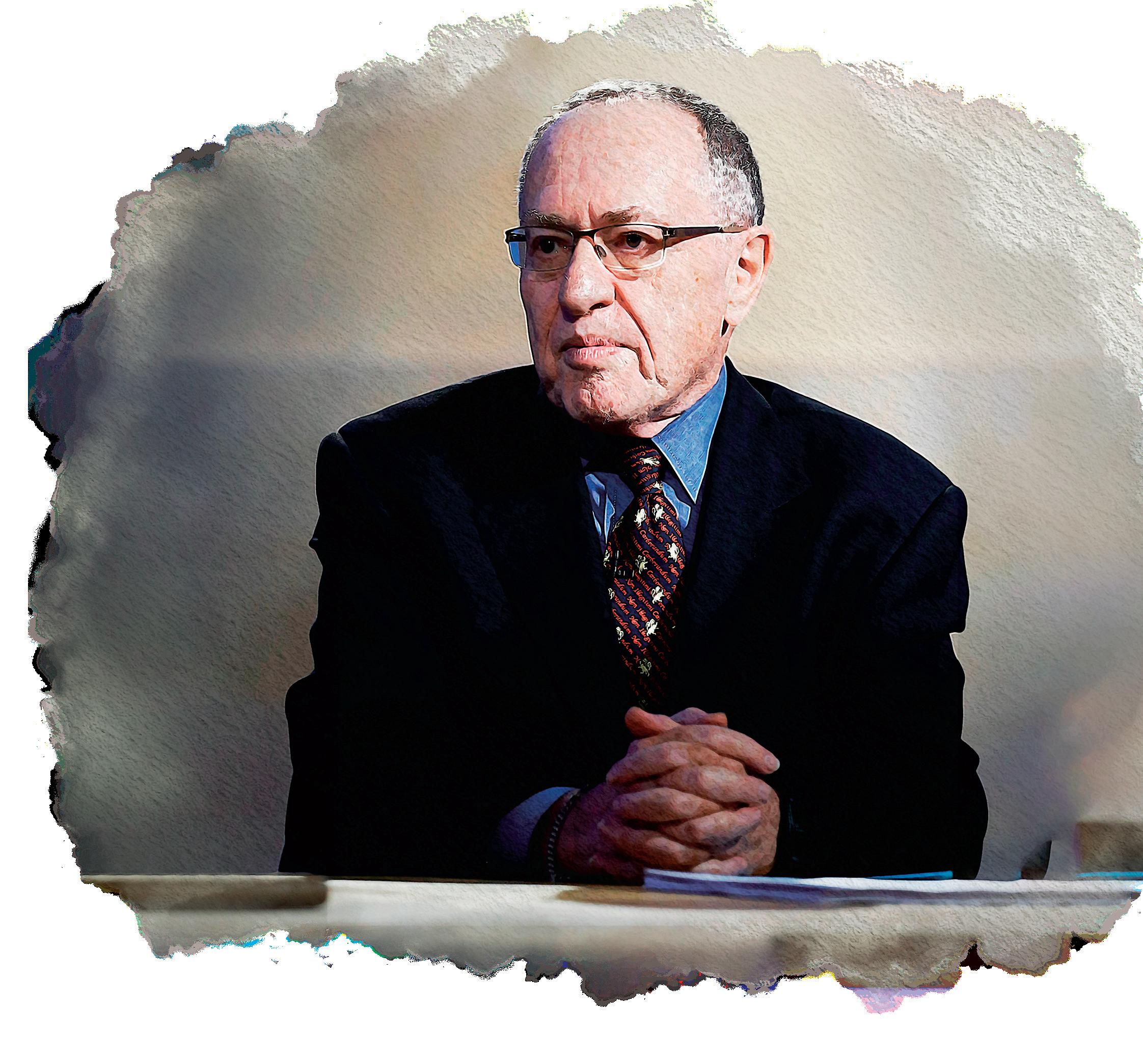
Justice t hurgood Marshall said the First Amendment has two sides: the right to speak and the right to hear,” says Alan Dershowitz, professor emeritus at Harvard Law School, “and the right to hear is just as important as the right to speak.”
In a recent episode of “American Thought Leaders,” host Jan Jekielek and Dershowitz discuss the cases being litigated against former President Donald Trump, his legal vulnerabilities, and the broader assault on civil liberties. Dershowitz is the author of a new book, “Get Trump: The Threat to Civil Liberties, Due Process, and Our Constitutional Rule of Law.”
JAN JEKIELEK: The erosion of civil liberties is one of the themes throughout your book. Where do you see this being most acute or problematic at the moment?
ALAN DERSHOWITZ: The title of my book “Get Trump” comes from the campaign promises of the attorney general and the district attorney of New York. They both campaigned on the promise to get Trump, regardless of the facts. “Show us the man, and we’ll find you the crime,” as Beria said to Stalin.
These two elected officials, both of whom I know and like personally, decided that the most important thing for their election, and now their reelection, is to assure the American public that Trump will not be allowed to run for president.
They investigated and investigated. The attorney general of New York found nothing criminal and didn’t go after him criminally. The district attorney of New York, Alvin Bragg, made up a crime never before used in American history, that is, failure to disclose an affair and paying hush money to cover up that affair, and then not listing it on corporate
forms. The theory is, “He didn’t disclose it because he was trying to cheat on his taxes two years hence or because he was trying to cheat on electoral rules.” It’s all speculative. It’s the worst indictment I’ve seen in 60 years of practicing and teaching criminal law.
When a Democrat who is elected goes after the man who’s about to run against his boss—the head Democrat, Joe Biden, whom I intend to vote for—when you go after the man who’s running against him, you’d better have the strongest case in American history. Instead, they have the weakest case in American history. It’s weaponizing our criminal justice system for partisan and political ends.
MR. JEKIELEK: James Comer, the head of the House Oversight Committee, said that he has subpoenaed the FBI director to turn over this unclassified document, which he believes, based on whistleblower information, will show a criminal scheme that perhaps President Biden or his family were involved in. The reason I’m asking about this right now: This also involves a sitting president. It involves potential political machinations and potential criminal behavior. At the same time, there’s the reality of someone being a sitting president, which you outlined in the book. How do we deal with things like this?
MR. DERSHOWITZ: The law should apply equally. No one is above, but no one is below the law. We shouldn’t have different rules. But in one sense, we do have different rules. If you are the president, or you’re running for president, the case against you better be very strong.
Let the public decide. Let’s have elections. Elections are unpredictable, but elections are the constitutional method of deciding who should be president—not some local DA sitting in his office rummaging through the statute books and trying to figure out if there’s any conceivable case against them—and if there isn’t, then making one up.
We’ve never seen anything like this in our history. It’s worse than McCarthyism, because McCarthyism looked to the past. It looked to find the people that had been communists in the 1930s.
This new McCarthyism is much worse, because it involves the future—young people who will be our next presidential candidates, who will be the editors in The New York Times, and who will be involved in the most critical positions of government. They are living at a time when free speech is being neglected, due process is being ignored, the Constitution is being stretched, and criminal law is being abused. That’s a heck of a way to send young people into positions of power and governance.
“[Young people] are living at a time when free speech is being neglected, due process is being ignored, the Constitution is being stretched, and criminal law is being abused.”
MR. JEKIELEK: I can’t help but think how a very significant portion of the Trump presidency was spent dealing with impeachments and special counsel investigations into Russiagate. Some people argue that it ate up at least half of the time.
MR. DERSHOWITZ: It ate up some time, there’s no doubt. I can give you my own personal experience. In my case, I agreed to represent President Trump on the floor of the Senate on the condition that he not in any way interfere with my representation, that I’m going to plan my defense, and I’m not going to show it to him or his legal team before I do it. Either he has to trust me, or I won’t do it. He accepted that condition.
We had no contact in the days before I spoke for him on the floor of the Senate. The next day, he called and thanked me. But it did take time and energy. There were calls and meetings with his lawyers. In both cases, the impeachments were unconstitutional.
In the first case where I defended him, the impeachment simply was not for treason, bribery or other high crimes and misdemeanors. In the second case, it was for protected speech, speech that was protected under the First Amendment.
The Democrats in Congress acted unconstitutionally in going after Donald Trump, which is why I became involved in the first case. I didn’t become involved in the second case for two reasons. First, I don’t generally represent people a second time. I like to represent people only once.
Second, I did not want to be involved in any claims that the election was unfair. I think the election was perfectly reasonable. I think that Trump lost legitimately, and Biden won legitimately
MR. JEKIELEK: I’m familiar with
your position on the election. Let’s look at these indictments. The one that you focus on involves the Mara-Lago raid. You say that the fault was with the Justice Department for seeking the search warrant in the first place. Can you explain this whole picture to me?
MR. DERSHOWITZ: Normally in a situation like this one, the government just gets a subpoena. It’s easy to get a subpoena. You serve the subpoena, and then the president or whoever gets the subpoena is obliged to turn over the material.
Merrick Garland himself said that search warrants are a last resort, because they are lawless. Essentially, police go into the house, search for everything, and take everything. They take lawyer-client privileged material, spousal-privileged material, and they could take religiously privileged material. That’s why subpoenas
are preferred over search warrants.
In this case, they claim that they were worried the president might destroy material. There’s now an ongoing investigation, which is the one investigation that I think poses some danger to Donald Trump. The investigation called for subpoenaing and giving immunity to employees of Mar-a-Lago to try to prove that he moved boxes, or ordered boxes to be moved.
If it were to be proved, that could pose a serious problem of criminal liability under obstruction of justice for President Trump. But when I was writing “Get Trump,” that investigation was not ongoing. All it was focused on was the failure to disclose the classified material in his possession. I don’t think that would result in a criminal prosecution, because President Biden and former Vice President Pence also had classified material in their possession. You can’t go after one without

“Former President Donald Trump’s indictment is the worst indictment I’ve seen in 60 years of practicing and teaching criminal law,” Alan Dershowitz says.
going after all three.
MR. JEKIELEK: What would it look like if the shoe were on the other foot? This is the perfect example because we have disclosure from the Penn Biden Center about the mishandling of classified information. We have these two cases, and you juxtaposed those in your book.
MR. DERSHOWITZ: Yes, you have to do that. The shoe on the other foot test is a variation of a book written by the great philosopher John Rawls, who says that rules have to be applied equally and without regard to who they’re being applied to, demanding absolute equal justice for all regardless of race, gender, party or any other irrelevant factor.
Today, it matters more whether you’re a Democrat or Republican, or black or white, or a male or a female, as to whether or not you’ll be sued or indicted. We live in a post-equality world where equity has taken over equality.
I’m opposed to the way in which diversity, equity, and inclusion have been used to create a systemically racist country. We were a systemically racist country up through the 1950s, and maybe even into the early 1960s. Then, we became a systemically anti-racist country from the 1960s on, basically into this century. Now, we’re going back to being a country where everything is seen through the prism of race.
It means that people today are being judged by race. Dr. Martin Luther King Jr.’s dream has become a nightmare. Today, medical students are judged by their race, gender, and sexual orientation. Scientific papers are judged by the race of the people who wrote them, rather than [by] the quality of the science. Einstein’s theory of relativity would probably be rejected today because he’s a white,
Jewish male in today’s hierarchy of identity politics. When you group people, when you say, “The blacks, the Jews, the gays,” you’re being a bigot.
MR. JEKIELEK: In the process, we lose all semblance of nuance. You give the example of how you opposed many of the Trump administration policies, but you’ve supported their Middle East policy and Israel policy, including the moving of the embassy to Jerusalem.
MR. DERSHOWITZ: I would say every single candidate that I’ve ever voted for, I voted based on nuance. But today, nuance is out the window. You have to pick sides. If you’re a Democrat and you say Donald Trump did anything good, you’ve committed some kind of political treason. The same thing is true on the other side if you say anything good about Biden.
When I was teaching at Harvard, for 50 years, I taught nuance. I don’t know whether students would accept the teaching of nuance today, and the teaching of calibrated, compromised solutions to problems. We live in a world of deep division. It’s a poor world intellectually, and it’s a poor world in every other way.
MR. JEKIELEK: We’ve seen many institutions captured by this way of viewing the world, with ideological young people who believe they’re doing the right thing with this radical transformation of society.
MR. DERSHOWITZ: It was Justice Brandeis, a great liberal, who once said, “The greatest danger to liberty lurks in people of zeal who are intending to do good, and think they’re doing good, but without understanding of the implications of what they’re doing.”
In “Get Trump,” I say that many of the people who are out to get Trump are good people who really think they’re doing the right thing. You can apply that, as well, to something like COVID. There have been mistakes made with COVID.
The ideal there is to balance health and civil liberties and never allow one to dominate, without considering the other. Did we get it right? That’s for historians to determine. You and I can continue to disagree about that.
But the point about our disagreement is that it’s rational. We can disagree, and then we’ll have a drink and shake hands. I’m not going to cancel you, and you’re not going to cancel me, unlike what’s happened to me on Martha’s Vineyard, where I’ve been going for 53 years. Now, I’m a persona non grata. The library has banned my books because I defended Donald Trump. People won’t talk to me. People have said to the restaurant I frequent, “If you serve Alan Dershowitz, we won’t come here again.”
It’s pure left-wing McCarthyism, whereas you and I can disagree without refusing to have dinner with each other.
MR. JEKIELEK: On this point,
“[Trump’s indictment is] weaponizing our criminal justice system for partisan and political ends.”
Alan, we are in 100 percent agreement. Now, I want to go back to some of these indictments related to Trump. It’s a stunning number of cases running simultaneously.
MR. DERSHOWITZ: In “Get Trump,” I point to all of them and argue that if this man were not running for president, none of this would have happened. If he had stayed in the building business, he would have had a happy retirement with his family and never seen the inside of a courtroom.
Of two cases that he has to worry about, one is the Fulton County case. But there’s no way he can be successfully prosecuted there, because what he said on the recorded tape was, “I need to find 11,000 votes.” He didn’t say invent or concoct. He said find. Find means that they’re there, and you just have to look hard to see if you can find them. I think that’s a complete defense there.
There is also a complete defense to the January 6th investigation that’s occurring in Washington. In his speech, he explicitly said he wanted the people to go to the Capitol to protest peacefully and patriotically. That is constitutionally protected speech.
His only vulnerability is the trial in New York, because in New York, you can get a grand jury to indict a ham sandwich. He’s at risk there, but I think that case will be reversed on appeal if there is a conviction.
His greatest vulnerability now may lie in the Mar-a-Lago case in Florida, if they can prove that he obstructed justice after he received his subpoena and after he was aware that the government was interested. If there is proof that he ordered the moving or hiding of classified material, that would present a serious problem for him.
MR. JEKIELEK: I want to jump back to the concept of free speech. You’re one of the biggest champions
MR. DERSHOWITZ: I’m in favor of unfettered free speech. There have to be some limitations, of course, some exceptions. Direct incitement is one. If a crowd is surrounding somebody, and you yell, “Kill him, kill him, kill him,” and the crowd then kills him, one can easily see how that should not be protected.
For the most part, I’m in favor of unfettered free speech, but we live in an age where free speech is under attack. For the first time in my life, academics are writing against free speech, due process, and meritocracy.
Again, that represents the future, because the academics are writing for students, and the students will be our future. There will be less appreciation for free speech, due process, and meritocracy.
MR. JEKIELEK: One of the things you mentioned in your book is that the effect of this whole “get Trump” mentality creates a situation where it’s very difficult to escape this partisanship to develop nuance again. Perhaps the purpose of some of these people is to create division, to shake the foundations of our society to the ground to rebuild something new, a beautiful new utopia afterwards. How do you deal with that?
MR. DERSHOWITZ: Most people are well-intentioned and just don’t understand the implications of what they’re doing. I’ll give you an example just from my own experience. “Get Trump” is a bestseller on Amazon, but you can’t buy it in a local bookstore. You can’t get it in many local libraries, because local libraries today, including my library in Chilmark, Massachusetts, censor books based on their political content.
I hope people will read my books, because I’m one of the few people
today who is liberal and a Democrat, and who is speaking up against these dangers. Most of the people doing so are conservatives, because they’ve been the victims of cancellation and repression. One thing we can all get together on is that America is far better if we are an open society with free speech and due process.
MR. JEKIELEK: One thing that you mentioned in the book is there’s a right to speak, but there’s also a right to hear speech. That’s the piece that we often don’t think about and that you actually explore quite a bit. Please leave us with how that other part works.
MR. DERSHOWITZ: When I defended Donald Trump, I was denied the right to speak in various venues to people who wanted to hear me speak. I can deal with it. I can write op-eds. But what about the people who want to hear me speak, or who want to hear you speak, or who want to hear other even more controversial speakers?
Justice Thurgood Marshall said the First Amendment has two sides: the right to speak and the right to hear, and the right to hear is just as important as the right to speak.
The vast majority of Americans today are denied the right to hear points of view that are disagreeable to the people in power. That’s true in universities and in the media. Ultimately, a majority of Americans can get together and can fight back. It shouldn’t just be the people who are actually censored.
So, thank you for allowing your listeners to hear my voice. You can disagree with me. We had some disagreements, and some agreements. I’m looking forward to coming back again and having another exchange with you.
This interview has been edited for clarity and brevity.
It’s not climate change. It’s not raging inflation or even the national debt. The real threat to the United States and to the world is the Chinese Communist Party’s (CCP’s) 100-year plan to defeat America and establish world domination. There’s no urgency in the mainstream media. That’s why “The Final War” had to be made. Anchored by senior investigative reporter Joshua Philipp, and one-and-a-half years in the making, “The
Final War” is a film that is so relevant to current events and so important that we’re offering it to EVERYONE for free. It will answer your questions about the pandemic, the impending invasion of Taiwan, and how the CCP works to keep the United States occupied with at least four global adversaries.
See the film. Know the danger. Be prepared. The final war is already underway.

‘THE
Sometimes, haste is needed, and at other times, calm deliberation is
By Jeff Minickhen my younger brother and I were kids, our father would often enlist us in his work crew of one. We cleared brush in the woods around the house, raked leaves, mucked out stables in the barn, and helped him build decorative rock walls, which he constructed on every property he ever owned.
Frequently, Dad would pause in these chores, look at us, and comment: “Pace yourself, boys. You’re going to wear out.”
This same counsel is embedded in the adage “Life’s a marathon, not a sprint.” As the narrator of Robert Frost’s “Stopping by Woods on a Snowy Evening” tells us, we have miles to go before we sleep.
Nevertheless, the pace of the race we’re in is uneven. Sometimes, circumstances demand a gallop rather than a trot, or even a charge at breakneck speed. Our supervisor tells us he needs a crucial report right away, as in yesterday, and jogging isn’t an option. Conversely, the rabbits who are always hurtling ahead, treating every task as if it, too, had to be done yesterday, are likely to overlook details and offend by their brusqueness their co-workers, friends, and family.
Here are four strategies that will help us complete these races while boosting our chances of happiness and success.

That task assigned to us by the su-
pervisor demands a mad dash. Other parts of our lives, such as marriage or raising children, are long-distance runs. Sometimes, our progress slows to a plodding walk-a-thon, and we wonder whether we’re ever going to reach the finish line. When we adjust our frame of mind to the pace, the race becomes easier and even enjoyable.
raise three human beings to become responsible and moral adults. Whether we’re running a 100-meter dash or an ultramarathon, we can benefit by pausing from time to time to visualize the finishing tape, our goal, rather than focusing solely on the race itself.
President Theodore Roosevelt was a sprinter. He darted from project to project, overcoming obstacles, always moving ahead, and rarely slowing his pace. In 1914, the 55-year-old Roosevelt undertook an exploration of the Amazon River. Insects, rain, illness, and lack of proper food and medical attention took their toll. He never recovered from this ordeal, and by age 60, he was dead.
In the film “Magnum Force,” Dirty Harry (Clint Eastwood) says, “A man’s got to know his limitations.” That’s a big part of staying in the race.
A mother of three small children can find every day a sprint, dressing and feeding the little ones, changing diapers, settling arguments. It’s easy to lose sight of the finish line, which is to
Life can unleash its cruel afflictions on each of us: financial ruin, the loss of a job, physical infirmity, the death of a beloved. Often we have little or no control over the damage done by these catastrophes. But where we do have some jurisdiction, our day-to-day lives, these wounds become self-inflicted if we center too much energy on the race and ignore joy, love, and beauty. By closing our eyes to these things, we risk becoming zombies, blind to the wonders around us, the real reasons why we’re running in the first place.
“Cool runnings” is a Jamaican expression that can mean “Peace for the journey.” We run all sorts of races before breaking the final tape of life. We may win some medals and applause from the crowd, but when we run with grace, always mindful of the essentials of a life well lived—love, happiness, friendship—an interior peace will be one of our greatest rewards.

When we run with grace, an interior peace will be one of our greatest rewards.
With more bicycles than people, the largest pub in Europe, a huge number of windmills, and the oldest national anthem, the Netherlands is full of pleasant discoveries.

SET IN THE UPSCALE GATED community of Sailfish Point in the beach town of Stuart, this is an ideal home for those who enjoy golf and sport fishing. 78
WHEN BRITISH TROOPS added gin to the tonic water administered to help prevent malaria after the Sepor Rebellion in 1857, a cocktail classic was born. 83
ELECTRIC VEHICLES HAVE been touted as the way to save the planet, but there are some unsettling realities that need to be considered. 84
With the pool and home providing a beautiful backdrop, the lounging area with a fire pit is an ideal place to spend relaxing evenings.

A spacious East Coast Florida home designed for active families
By Bill LindseyWith views of the ocean and a Jack Nicklaus-designed golf course, this 8,542-square-foot, two-story, six-bedroom, six-full-bathroom and two-half-bathroom home on a 0.78-acre lot features 166 windows to enjoy the stunning vistas from every room and every angle. Located within the exclusive Sailfish Point community on Hutchinson Island, the home is ideal for large families and owners who enjoy entertaining to take part in Florida’s year-round golf and boating lifestyle. Built in 1994 using concrete block construction with a concrete tile roof and impact-resistant glass windows, the residence has recently been completely renovated.



A two-tone paved driveway accents the steps leading up to the front entry. Inside, the open floor plan is anchored by a wellequipped kitchen with ample custom cabinets, stainless steel appliances, an oversized island, and a breakfast bar. The formal dining area is immediately adjacent, with the living area just beyond. Marble flooring, vaulted ceilings accented with graceful ceiling
fans, and floor-to-ceiling glass walls facing the golf course and ocean provide an airy atmosphere. An entertainment area features a wall-mounted monitor for enjoying movies or sports, a fireplace, and a fully equipped kitchen. An elevator provides access to the upper level, where the huge master bedroom features a sitting area and a widescreen monitor facing the bed and located above a fireplace, both set into a gleaming marble wall. The master bathroom features a soaking tub, oversized walk-in shower, and vanities against either wall. The bedrooms all feature private baths and balconies overlooking the grounds.
The living and entertaining area extends outward via three balconies and four covered patios leading to the 48-foot-long heated pool, two spas, a fire pit, an outdoor kitchen, a pool house, a three-car garage, and a wholehouse generator. The community amenities include gated access, 24-hour security, an ocean-access marina, a golf course, a fitness center, restaurants, a spa, and tennis and pickleball facilities.
MILLION
• 6 BEDROOMS,
• 6 FULL BATHS, 6 HALF-BATHS
• 8,542 SQUARE FEET
• 0.78 ACRES
KEY FEATURES
• ELEVATOR
• OCEAN AND GOLF COURSE VIEWS
• 48-FOOT-LONG HEATED POOL
• POOL HOUSE
AGENT
Gloria Sheridan
ONE Sotheby’s International Realty
561-345-0355

It’s like a scene out of a storybook. In the fading late afternoon sun, the windmills stood all in a row, as if Don Quixote might just pop out from behind one and commence his tilting.
The actual turning of the blades, although made from wood, is facilitated by fabric flaps, which must be unfurled in the morning, but then buttoned up at the end of the day. A guide notes that people actually still live inside these mills, and that to do so, to even apply for the position of miller (windmill keeper), you must train for years and hold a special certificate.
After touring through one of them that was preserved as a museum, I emerged on the other side, and saw him. Not Quixote, but a miller at the next mill, striding out to perform his end-of-day responsibilities. He wore a casual shirt and jeans—and wooden shoes.
As we walked toward him, I asked the guide, “Why?”
“It’s just part of his outfit,” the guide said. “They love to keep the traditional things. They wear wooden shoes all day long.”
Meticulously, the miller bundled up the fab ric—called sails—and secured the old wooden blades with a brake so that they wouldn’t spin all night. Then, with a nod of his head, he was gone, back inside the windmill.
The Netherlands is a place that quickly conjures a whole series of images. Sometimes, the things that we assume only reside now in fables—such as windmills and wooden shoes—still come alive today.


As summer heats up and travel to Europe becomes extremely busy, Amsterdam, one of the world’s most popular travel destinations, will again be slammed with visitors. But this tiny country offers plenty of fun outside of its largest city.
For example, Kinderdijk, just outside Rotterdam, gained the UNESCO World Heritage Site designation because, in the words of UNESCO, it showcases the “centuries-long battle” of the Dutch to avoid inundation by an encroaching sea, and the invention of a complex system to ensure survival. A total of 19 windmills stand side by side in rows, built to pump water so that the land could be farmed.
The guide noted that when people first started farming here in the 10th and 11th centuries, the land was above sea level.
“But now, without pumping, within a month—maximum,
26% of the Netherlands would be flooded without water-savvy interventions.

Try street food like stroopwafels or fries served with ‘fritessaus.’The Renaissance-style Delft City Hall was completed by architect Hendrick de Keyser in 1620. PHOTO BY SERGII FIGURNYI/SHUTTERSTOCK
two—almost half the country would be underwater,” he said.
As we made our way through the snug quarters inside the lighthouse, which provide just enough space for millers to sleep and work, the guide described his idyllic childhood, growing up just in the next village.
“When the canals froze, we skated on them,” he said. “And we set up stands on the ice, with coffee and pea soup.”
One of the best things about traveling in the Netherlands is that nothing is very far away. For example, from Rotterdam, you can reach The Hague by train in as little as 24 minutes.
The nation’s administrative and royal capital, The Hague, or Den Haag, is famous all over the world for its central role in international jurisprudence, home to the International Criminal Court and the International Court of Justice (the judicial arm of the United Nations). Home to about 800,000 people in its metro area, it’s the country’s third-largest city, and a lovely place.
You can tour the neo-Renaissance Peace Palace, and, inside the Ridderzaal, the famous Hall of Knights. Dating back to 1248, it’s part of the larger, gothic Binnenhof castle complex. It’s here that the Dutch monarch opens Parliament with the annual speech from the throne.
Nearby is the Mauritshuis museum. Although smaller than Amsterdam’s Rijksmuseum, the Mauritshuis is nonetheless a truly
excellent place to experience Dutch art. You can stroll among works by Rembrandt, Rubens, and Vermeer. It’s home to Vermeer’s “Girl With a Pearl Earring,” one of the best-known works of the Dutch Golden Age.

Just next door to The Hague is the home of another Dutch icon: Delft. Few created items are as evocative and immediately identified with a country as the blue pottery created in this city of just more than 100,000.
Wealthy families would showcase their collections of this pottery, often known as Delft Blue, as a point of pride, and at its peak, between the 17th and 19th centuries, a total of 33 factories here produced it. One remains, Royal Delft, and you can still take a deep dive into the history and production process with a factory tour.
And, all across the Netherlands, there’s probably no better place than Delft for a casual stroll. The city is lined with canals, the oldest dating back 750 years—even the city’s name is related to the Dutch word for “dig.” You can take a tour on a canal taxi, or even a little cruise, although I was happy to lace up my shoes—leather ones, not wooden—and take a walk, crossing bridges and tracing waterways, and losing myself as far from the tourist crowds as possible.
The Netherlands has one of the world’s very best public transit networks, with fast, frequent trains connecting cities, and trams, buses, and sometimes subways moving people efficiently in town.
Stay:
Housed in the offices of a former independent newspaper, The Slaak celebrates the paper’s 1950s heyday, with a sleek, vintage feel in both public spaces and guest rooms. Located on a leafy street in Rotterdam, you can reach Delft, The Hague, and Kindersdijk quickly from the nearby train station.
The drink of summer soirées has surprising medicinal roots, as an anti-malarial that kept the British Empire healthy
By Melanie YoungFor many imbibers, the gin and tonic is a go-to warm-weather drink. A refreshing balance of botanicals and bitterness, plus a light burst of effervescence, makes it perfect for languid summer nights at home.
Made with just three ingredients, the simple cocktail has a surprisingly colorful history.
Gin is a clear, neutral spirit distilled from grain and steeped or infused with juniper berries during the distillation process. Other botanicals are added to layer in flavors, such as angelica, cardamom, coriander, licorice root, and citrus peel.

The word “gin” is derived from “genever,” Dutch for juniper. Therein lies a hint at some of the spirit’s early roots: Genever is also the name of a malted white spirit that originated in Holland during the late 1500s, which included juniper to make it more palatable and give it curative properties.
Tonic water contains quinine, a bitter compound extracted from the bark of the quinquina, or cinchona tree, native to South America. Indigenous Peruvians used the bark to reduce fever and chills. Europeans brought the bark back to the Old World, and in 1820, scientists isolated and identified the purified extract from the cinchona tree as a cure for malaria, naming it quinine.
During the 1800s, British troops who were stationed in India took to mixing packets of powdered qui-
• Cubed ice
• 2 ounces gin
• 4 ounces tonic water
• Lime or lemon wedge

Fill a highball glass with cubed ice. Add gin and tonic water. Garnish with lime or lemon wedge and serve cold.
nine with water and a little sugar, to adjust the flavor, for a bitter medicinal drink that they called “Indian tonic water.” Gin and lemon or lime slices were added to make the medicine go down easier, resulting in an early “gin and tonic.” Permission was granted for a daily gin and tonic to keep everyone healthy.
Gin and tonic continued
to be a popular drink among troops throughout the British Empire, as well as with the leisure class. Today’s version, with carbonated tonic water containing much less quinine, won’t ward off malaria but remains a refreshing spirited libation.
First, choose your gin; the spirit comes in multiple styles.
The most popular for gin and tonics is a London dry gin, whose juniper-forward notes balance the bitterness in the tonic. Other designations include Old Tom, which is slightly sweeter and less botanical; Plymouth gin, an earthier style exclusively made in Plymouth, England; and Navy Strength gin, which is at least 57 percent
alcohol by volume.
Tonic water also has different styles, from the more austere Indian tonic water, which is more bitter, to aromatic versions with elderflower, cucumber, or other botanicals. All are carbonated and sweetened.

“The ratio of tonic to gin is also important,” London-based spirits expert Olivier Ward said. “Too much bitter quinine can mask the gin; not enough carbonation deflates the zest.” He suggests a ratio of one part gin to two parts tonic water, or up to four parts tonic for more aromatic gins.
Melanie Young writes about wine, food, travel, and health. She hosts the weekly radio shows “The Connected Table LIVE!” and “Fearless Fabulous You!”

EVs are touted as very “green” but have aspects that put that image at risk.
 PHOTO BY WERBUNG/ SHUTTERSTOCK
PHOTO BY WERBUNG/ SHUTTERSTOCK
While many car manufacturers, consumers, celebrities, politicians, and states have enthusiastically embraced the idea of replacing internal combustion engine (ICE) vehicles with electric vehicles (EVs), there are some aspects of EVs that need to be considered.

EVs are not a new concept. In 1898, Ferdinand Porsche introduced the Egger-Lohner C.2 Phaeton, a fully electric car also known as the P1. Two years later, Porsche introduced the Semper Vivus, a hybrid car that featured an electric motor powered first by a battery, then by combustion engines that fed electrical-power generators.

Henry Ford and Nikola Tesla also experimented with EVs. However, because it was significantly more affordable than the EVs of the time, Ford’s Model T doomed the EV concept and led to the widespread acceptance of ICE vehicles. The gasoline-powered vehicles became widely available thanks to very efficient manufacturing processes. And the fact that gasoline was more readily available than electricity in the United States and many other parts of the world not only played a role in the initial dominance of gasoline-powered vehicles, but also has continued to impact the EV market.
Electricity is a secondary energy source; it must first be generated before it can be used to power anything. In the United States, most electricity is produced by natural gas-fueled
power plants, followed by nuclear and coal-fired plants, and then hydroelectric-, wind-, and solar-pow ered facilities. This means that the argument of EV fans that their cars are superior to fossil-fuel-powered vehicles falls flat; natural gas, a fossil fuel, is projected to be the leading fuel used in electrical generation for the foreseeable future.
Several other often-overlooked factors should be examined when considering an EV. Among these is the environmental cost of strip-mining for the lithium and cobalt required to manufacture EV batteries. This process creates more harmful emissions than those typically produced in the manufacturing of an ICE vehicle; requires substantial amounts of fresh water; and disrupts the environment, wildlife, and local residents. Also, unlike traditional “wet cell” automotive batteries, which are easily recycled, only about 5 percent of EV batteries are recycled. These batteries are said to have a lifespan of about 10 years, at which time they need to be replaced, sometimes at a cost approaching that of a new EV.
Another battery issue is their flammability; in Florida, several EVs reportedly burst into flames after
Electric Vehicles tend to be much heavier than internal combustion engine vehicles due to the large number of batteries providing their power.

Ferdinand Porsche’s first hybrid vehicle, the 1900 Semper Vivus, introduced two years after he created the allelectric P1.
Fast-recharging stations for EVs resemble gasoline stations, with multiple chargers to allow several cars to “fill up” simultaneously.

In 1898, Ferdinand Porsche introduced the Eggner-Lohner C.2, a fully electric car.Connecting an EV to a recharging power cable is very similar to using a traditional fuel nozzle at a gasoline station.
being exposed to high levels of saltwater caused by storm-related flooding. In one case, the fire completely destroyed a home after spreading from the garage in which the vehicle was parked. Other EVs have been reported to burst into flames after being involved in crashes. These fires required huge amounts of water to extinguish, only to reignite either at the crash scene or after being transported to a storage facility, again requiring a huge amount of water to douse. Because the batteries used in EVs cannot be easily repaired if damaged, an alarming number of EVs are considered total losses by insurance companies after incurring relatively minor damage. Consequently, owners of EVs can be charged much more for insurance coverage in comparison to the cost of covering an ICE-powered vehicle.
Another consideration: The electrical grids in the United States and in other countries need to be overhauled to switch to renewable sources such as solar and wind in order to be able to supply the electricity needed to power the projected large numbers of EVs in the future.
For these and other reasons, Toyota, currently the world’s leading manufacturer of vehicles, isn’t rushing headlong into switching from ICE to EV production. While the firm does offer an EV, a wide range of hybrid vehicles, and the innovative, hydrogen-fueled Mirai, the company is fo-
The other side of the EV issue
cusing its considerable technological expertise on improving the efficiency of ICE engines. Toyota spokespersons have cited both the lack of recharging facilities in much of the world and the expected continued demand for ICE power as compelling reasons for the company’s stance. And while hydrogen power shows great potential, the only U.S. public refueling stations are located in California.
Even in areas where public EV charging systems are plentiful, there can be issues with finding an open charger that’s capable of fast-charging the vehicle when it’s needed. At present, most private EVs are charged overnight at home; in many cases, a residential electrical system needs to be upgraded to allow fast-charging, otherwise it can take up to 24 hours to fully charge an EV. Extreme heat and cold can reduce the range of an EV by increasing how much energy the vehicle requires under these scenarios, and thus affecting how often the EV needs to be recharged. The standard for an EV driving range seems to be about 250 miles, which falls in line with the typical daily commute of about 50 miles, but could impact longer drives. EV tow vehicles reportedly have seen large drops in actual range when an EV is towing a boat or trailer.
EVs have plusses to be sure, but all sides need to be examined before “plugging in.”

Many EVs have a range of about 250 miles between charges, but towing a trailer or temperatures of extreme heat or cold can reduce that significantly.
It’s estimated that EVs require a battery replacement after about 10 years. An EV can cost more to insure than an ICE-powered vehicle due to the high repair costs for EVs.

1 2 3
Most of the electricity now produced in the United States comes from natural gas-powered facilities, followed by nuclear and coal-fired plants, making EVs a lighter shade of green.


$89
Hammocks are great for taking a nap or relaxing with a good book, but this one takes the worry out of where to attach the ends. The selfcontained design unfolds in seconds and features a canopy to provide welcome shade. It supports up to 250 pounds yet weighs a mere seven pounds, making it very easy to move as desired, and it comes with a handy storage bag.

$139.99
$279.99
With the RV serving as the sleeping quarters, this 12-by-12 gazebo that’s easy to set up provides the perfect place to relax and dine outside, protected from the sun and from buzzing insects. Hexagonally shaped for maximum interior volume, the screen sides allow a refreshing breeze, while the fabric provides UPF 50+ sun protection. The storage bag keeps it clean and out of the way between uses.

$449.95
Storage space is at a premium even on the largest RVs, making this a great way to bring the bikes along. Built to provide many years of service, it attaches in minutes to the RV’s trailer hitch receiver, so it can be used on other vehicles, too. The arms rotate up to hold and lock up to four full-size bikes; it folds down out of the way when not in use.

Campfires and s’mores are traditional pastimes of RVers, but for the times when a traditional campfire might not be possible, this fire pit is the answer. Instead of all the time and effort needed to build a rock-ringed fire pit and gather wood, this 19-inch-diameter system is ready in minutes. Just set it in place, connect a propane fuel tank, open the valve, light it, and enjoy.


$258.99
When an RV arrives at a campsite, one of the first tasks is to connect to “shore power.” To add peace of mind, consider this small piece of equipment engineered to automatically protect the rig’s electronics, appliances, and electrical system from both over- and under-voltage fluctuations, power surges, and incorrectly wired electrical sources. The durable Lexan weatherproof casing houses high-tech microprocessors and displays current levels.

 By Mitch Albom
By Mitch Albom
One morning, folks in Coldwater, Michigan, begin receiving mysterious phone calls from the dead, voices claiming to be from heaven. A miracle? A hoax? As visitors and protesters overrun the town, Sully Harding, a widower recently released from prison, sets out to find the truth, and he’s determined to protect his young son from this deception. Albom leaves us guessing until nearly the end, and then we’re left guessing again. Realistic characters and several plot twists make this a great summer read.
HARPER, 2014, 336 PAGES
 By Angus Konstam
By Angus Konstam
Some moments are worth commemorating, even when they end in defeat. In the spring of 1941, the German Luftwaffe drove the British from Greece. They evacuated troops from the Greek mainland and then the island of Crete. In both of these instances, the British successfully conducted a massive yet costly undertaking that rescued tens of thousands of soldiers in order to fight another day. It’s a powerful book that highlights the British mentality—a mentality that ultimately led to victory over Germany.
OSPREY PUBLISHING, 2023, 96 PAGES
love to hear from you. Let us know at features@epochtimes.com
This week, we feature a naval history of an important British evacuation and a lush novel about the fate of three generations of an Indian family.
 By Jennifer Ackerman
By Jennifer Ackerman
 By Abraham Verghese
By Abraham Verghese
This is a lovely, sweeping novel of epic proportion following the fates of three generations of a family living on India’s Malabar Coast. This beautiful region is dominated by a network of canals, and the intricate waterways set the stage for this family’s haunting legacy: At least one in each generation dies from drowning. The story begins in 1900 with a young girl about to be wed. Her future is at the heart of the narrative. Through tragedies and triumphs, love and faith are a constant.
GROVE PRESS, 2023, 736 PAGES
 By Douglas Wood and P.J. Lynch
By Douglas Wood and P.J. Lynch
“No one but you can feel the rain kiss your skin” begins this beautiful book, reminding us to slow down and take notice. It will leave a young one with a sense of wonder and empowerment, and a parent with a reminder of a child’s innate curiosity, their yearning to explore, and an appreciation of the simple things—“the most important ones of all.”
CANDLEWICK, 2011, 32 PAGES
Owls hold our imagination. They are mysterious. They seem wise. They appear frequently in literature and myth. What are they really like? This book explores the world of owls and looks at them from multiple perspectives: their physiology, their environment and how they live in it, how they hunt, how they communicate with each other, and how they interact with humans. It’s a delightful book that reveals unexpected aspects of owl behavior and explains why humans have always been fascinated by them.
 By Jon Stallworthy, editor
By Jon Stallworthy, editor
Ranging from “The Book of Exodus” to Peter Porter’s apocalyptic “Your Attention
Please,” this anthology features more than 250 poems about war, its heroics, and its horrors. Here are familiar poets—Tennyson, Whitman, Wilfred Owen, and many more—and those whose names may be new to us, such as John Cornford and Keith Douglas. In this history of human conflict in verse, with British and American poets predominant, the poems put a human face on the bitter cost of battle to soldiers and civilians alike.
OXFORD UNIVERSITY PRESS, 2016, 390 PAGES
This week, we feature a hilarious whodunit from the ’80s and a deeply moving romance about two souls who seem destined to be together.
‘Adventureland’
When Nora (Greta Lee) and Hae Sung (Teo Yoo) were kids living in South Korea, they were so close that their parents thought that they would marry one day. But when Nora’s family moved away, she went on with her life, marrying Arthur (John Magaro), an American writer. However, when Hae Sung reappears, he and Nora wonder what could have been.
This is a hauntingly beautiful film about two intertwined souls who seemed destined to be together but were torn apart by circumstances. It’s a delicate examination of love, loss, and destiny.
In post-World War II Europe, U.S. soldier Ralph Stevenson (Montgomery Clift) finds young Karel Malik (Ivan Jandl),

who escaped from a Nazi death camp. Stevenson tries to help the boy find his mother, who is also looking for her son. With excellent narration and cinematog-
DRAMA | ROMANCE
Release Date: June 23, 2023
Director: Celine Song
Starring: Greta Lee, Teo Yoo, John Magaro

Running Time: 1 hour, 45 minutes
MPAA Rating: PG-13
It’s the summer of 1987, and James Brennan (Jesse Eisenberg) has just graduated from college and plans to spend time in Europe. Due to limited finances, however, he gets a job at an amusement park. There, he meets Em Lewin (Kristen Stewart) and sparks begin to fly, but she’s involved with someone else. James soon finds that true romance may not come so easily.

This film has plenty of endearing moments and, besides a few bits of crude humor, is
more relatable than “Superbad” director Mottola’s other major coming-of-age comedy.
COMEDY | DRAMA | ROMANCE
Release Date: April 3, 2009
Director: Greg Mottola
Starring: Jesse Eisenberg, Kristen Stewart, Ryan Reynolds
Running Time: 1 hour, 47 minutes
MPAA Rating: R
Where to Watch: Amazon, Apple TV, Vudu
Where to Watch: Theaters A GREAT COMEDY WITH A WHODUNIT TWIST

raphy, this heartrending drama, which was filmed on location, has an almost documentary vibe to it.
DRAMA | WAR Release Date: March 26, 1948
Director: Fred Zinnemann
Starring: Montgomery Clift, Ivan Jandl, Aline MacMahon
Running Time: 1 hour, 44 minutes
Not Rated
Where to Watch: Apple TV, Amazon, Vudu
Six guests from Washington are invited to a spooky mansion in New England for a dinner party. Mr. Boddy (Lee Ving) shows up and informs the guests that he’s the one who’s been blackmailing them. But when Mr. Boddy is found murdered, the guests become suspects and must figure out who the culprit is.
Based on the classic game of deduction, this whodunit is anything but boring: With scathing, rapid-fire dialogue and
numerous interesting plotlines, it packs a lot of laughs into its running time.
COMEDY | CRIME | MYSTERY
Release Date: Dec. 13, 1985
Director:
Jonathan Lynn
Starring: Eileen Brennan, Tim Curry, Madeline Kahn
Running Time: 1 hour, 34 minutes
MPAA Rating: PG
Where to Watch: Amazon, Fubo, Vudu


IN OUR FAST-PACED, information-rich world, it’s crucial to equip our future leaders with the knowledge and insights they need to thrive.
That’s why we’re delighted to offer students a free digital subscription to The Epoch Times for up to 5 years—a golden opportunity for college students to dive deep into award-winning journalism, global news, insightful opinion pieces, and more.
We encourage you, our valued readers, to take this opportunity to enable your college-age kids to sign up for this unprecedented offer. It’s not just a subscription—it’s a ticket to global
awareness, enhanced critical thinking, and getting a step ahead in their academic journey. Furthermore, if you have any contacts at schools or educational organizations who you believe could benefit from our student
QRcode:
ReadEpoch.com/Student
Forfurtherquestions, pleasecall: 833-699-1888
*Studentssimplyneedto verifytheirstudentidentity.
What we say, when done right, is what marks us as great communicators. These tips will grant you Churchill-worthy skills.
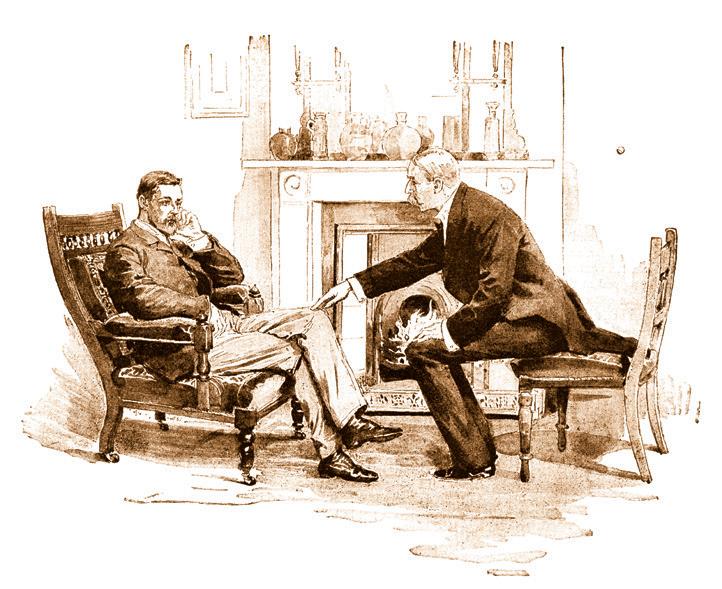 By Bill Lindsey
By Bill Lindsey
All too often, the phrase “thank you” is overused and misused. If you are being thanked for something, the proper response isn’t repeating “thank you,” but instead offering some variation of “you’re welcome.”
Maintaining eye contact with the person thanking you and smiling at them will add authenticity to your display of gratitude. It’s a simple thing that can make someone’s day brighter.
The simple act of adding “please” to virtually any request transforms it from impersonal to pleasant. While there are some instances when adding “please” isn’t required, such as “the ship is sinking; get in a lifeboat,” for most other scenarios, tack it on. This applies to business discussions as well as fleeting interactions with those we encounter out in the world. Leave a trail of smiles.
A lively, fun conversation is sure to create opportunities to share your thoughts and experiences, but first, allow the person speaking to complete their thought. Holding up a finger to indicate that you want to say something can be distracting and comes across as rude, so make a mental note of what you want to say, or if you must, jot it down, and then get back to actively listening to the speaker.
It’s almost always best to give a prompt, honest response. However, if you find yourself unsure of what to say, or perhaps hesitant to say out loud what you are thinking, don’t say anything. It’s better to remain silent than to say what you assume the other person wants to hear, or worse, say something in the heat of the moment that can’t be taken back.
Almost everyone will at some time find themselves at a loss for words. When this happens, rather than inserting fillers such as “you know” or “ummm,” consider “Hmm, I need to collect my thoughts,” or simply “I’ve lost my train of thought; let me get back to you on that.” It’s perfectly acceptable to simply pause for a moment while you find the right words, rather than use verbal fillers.
